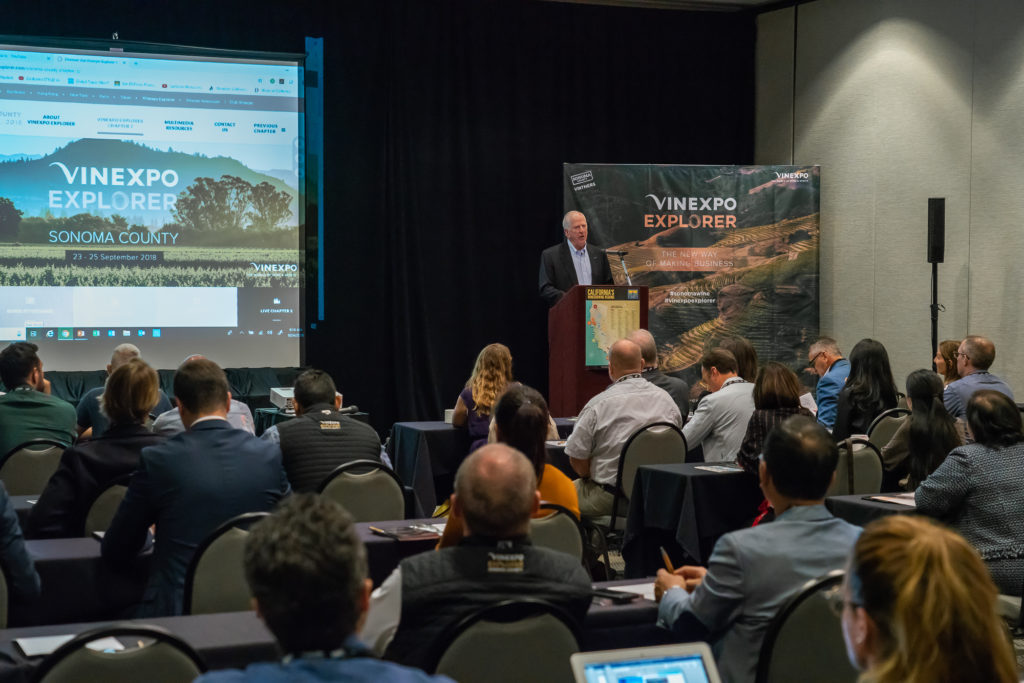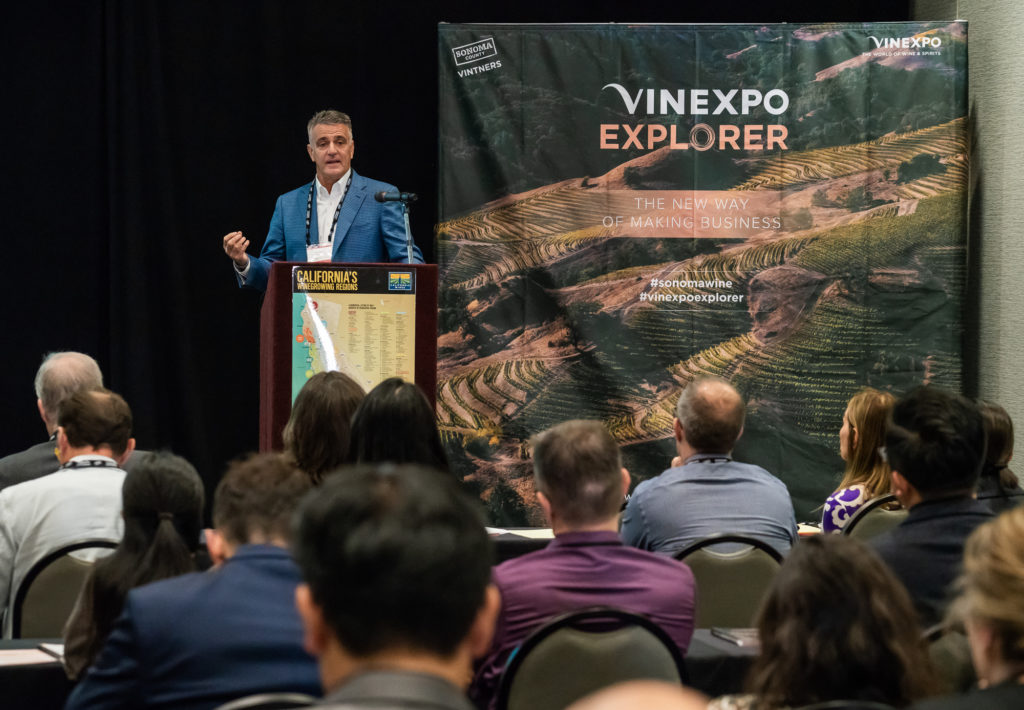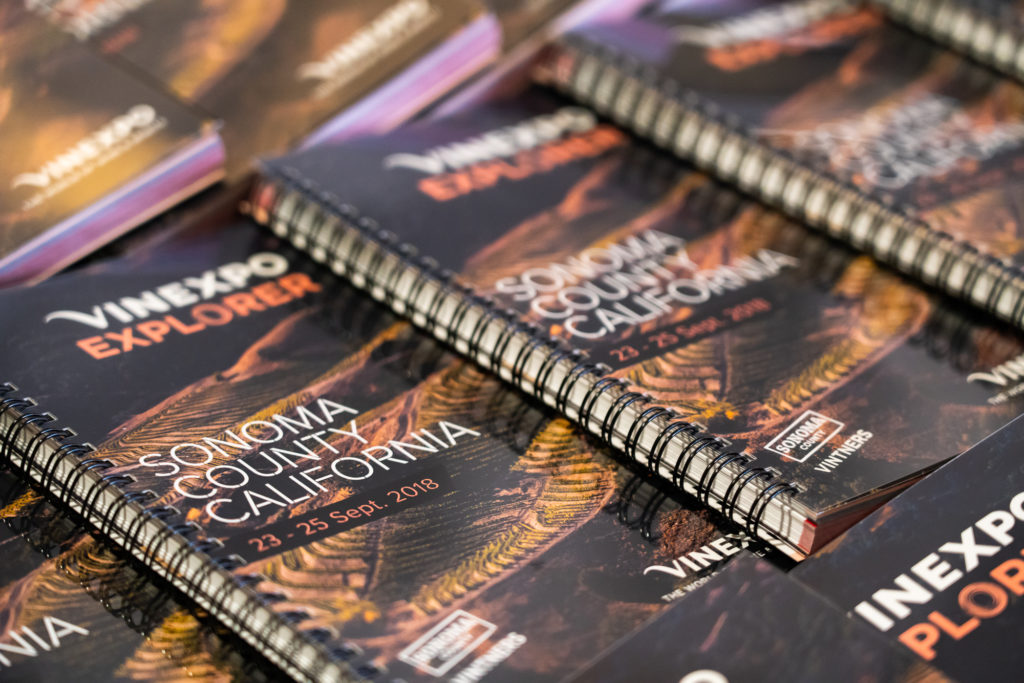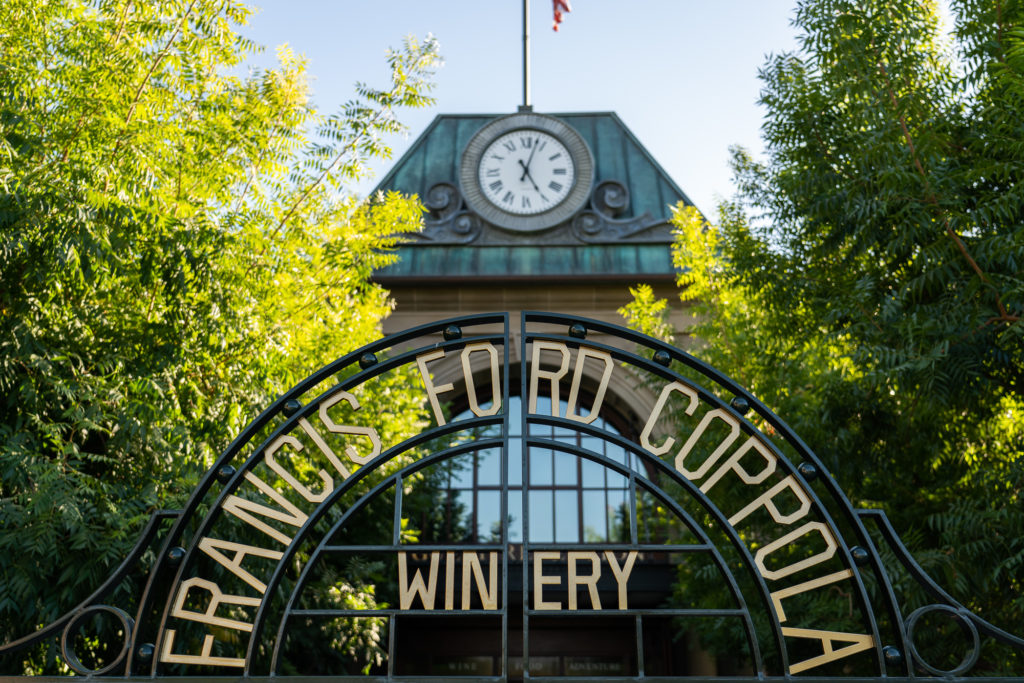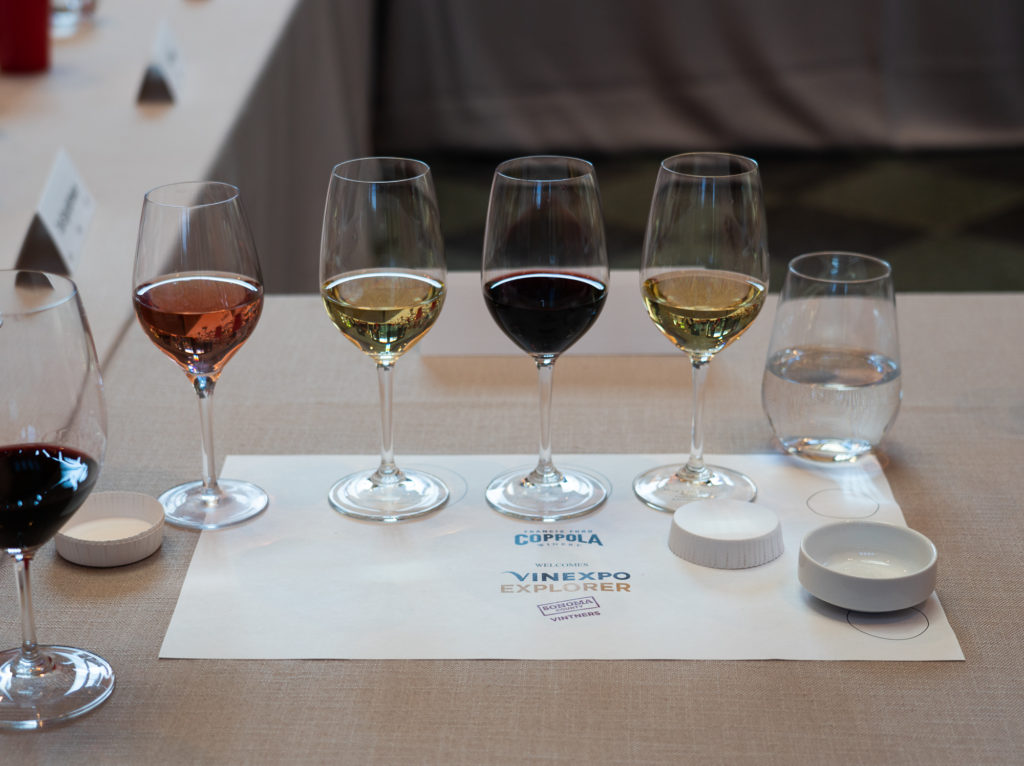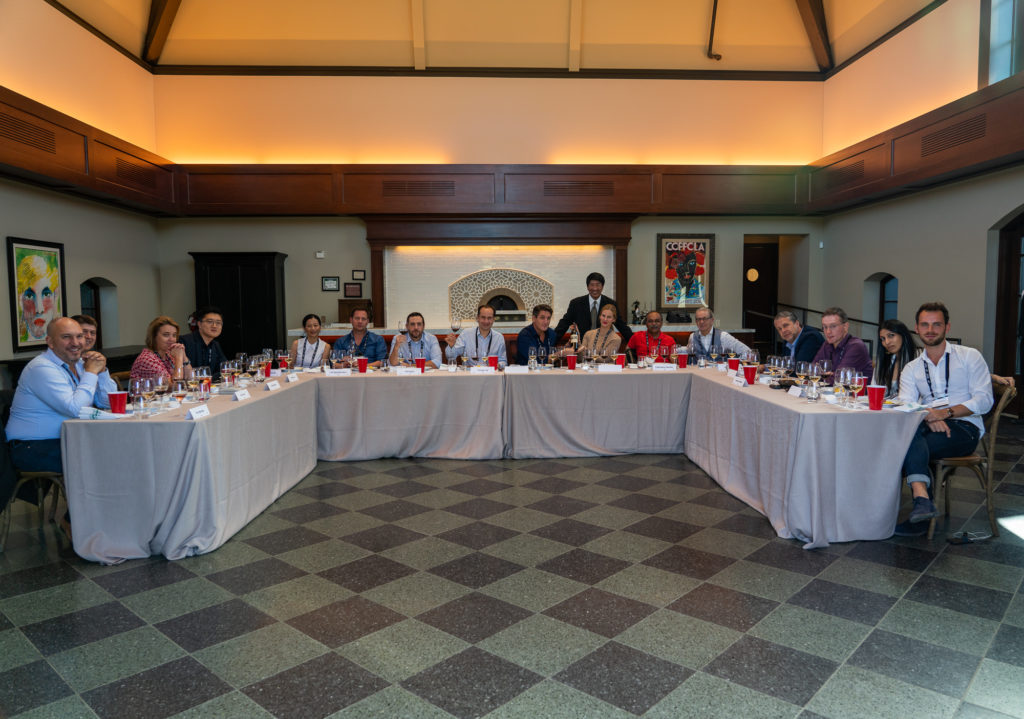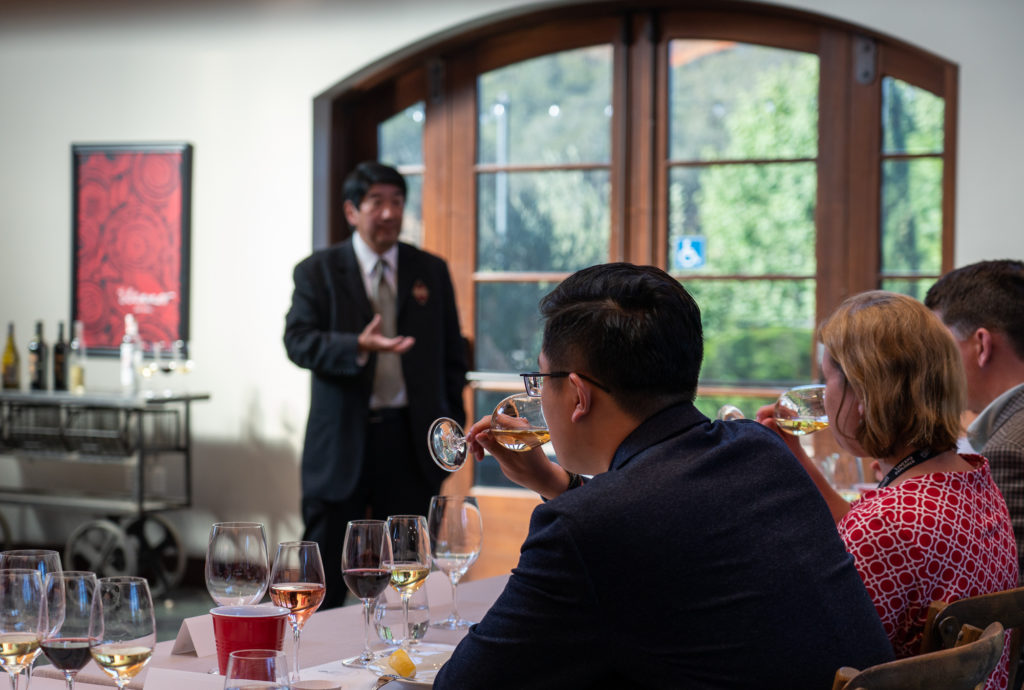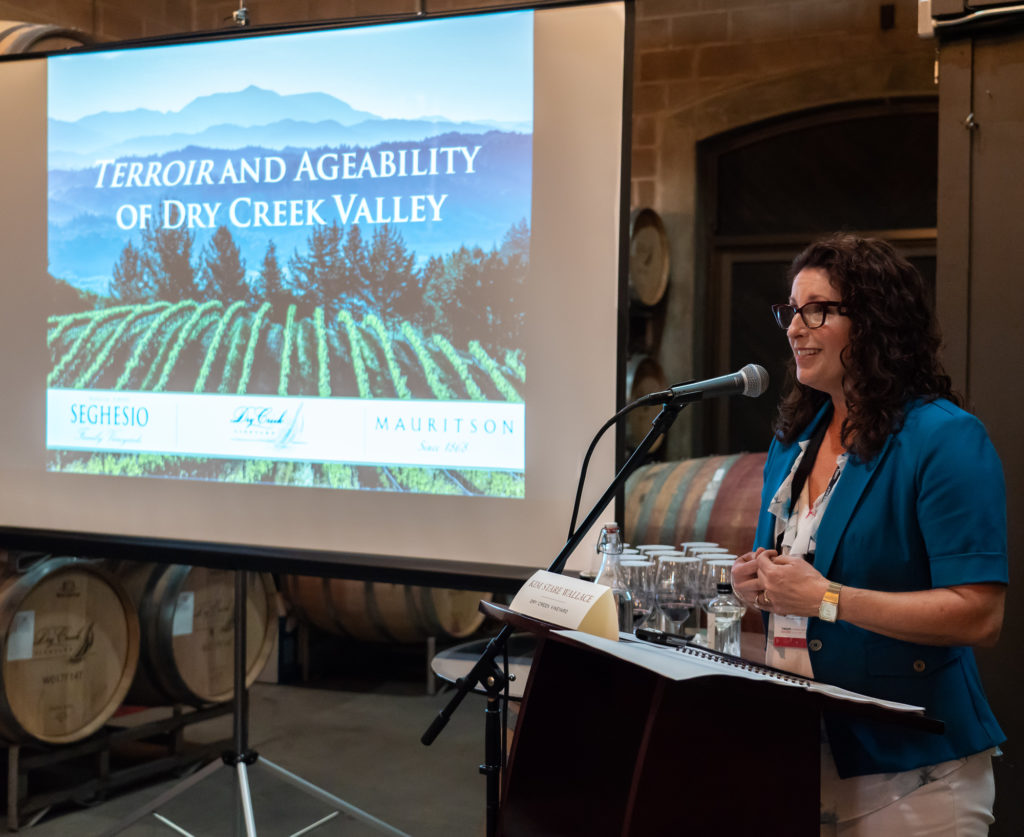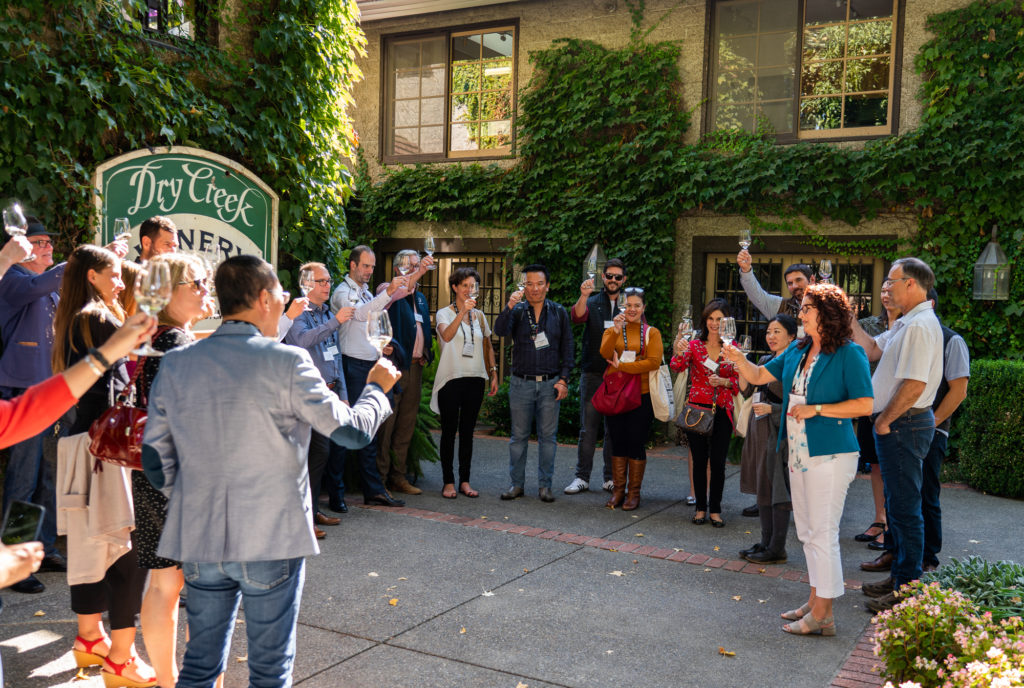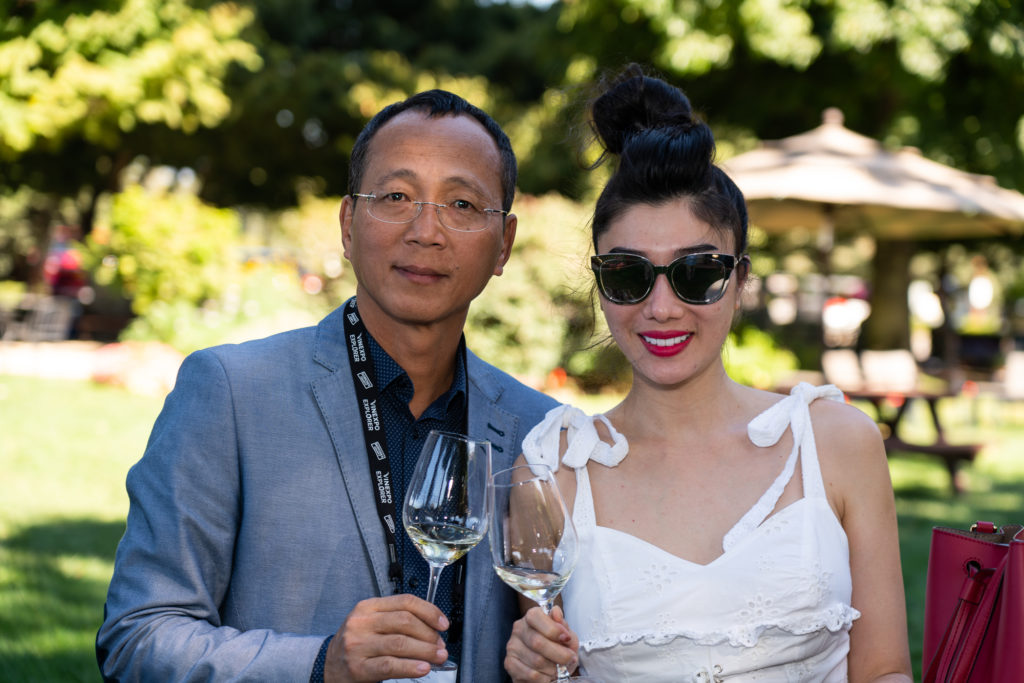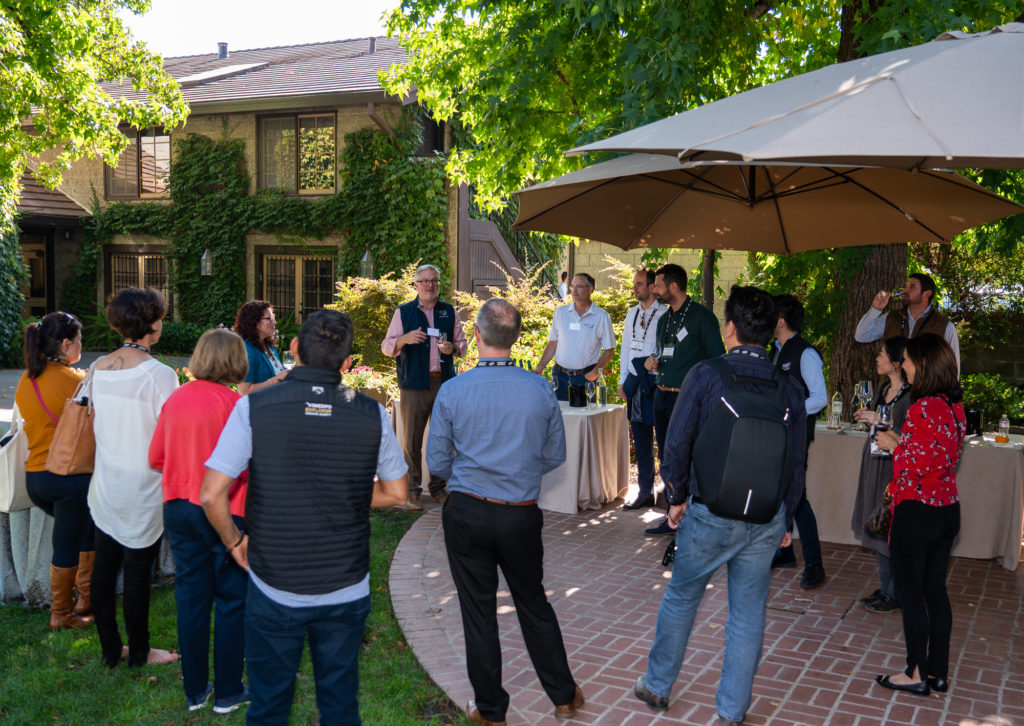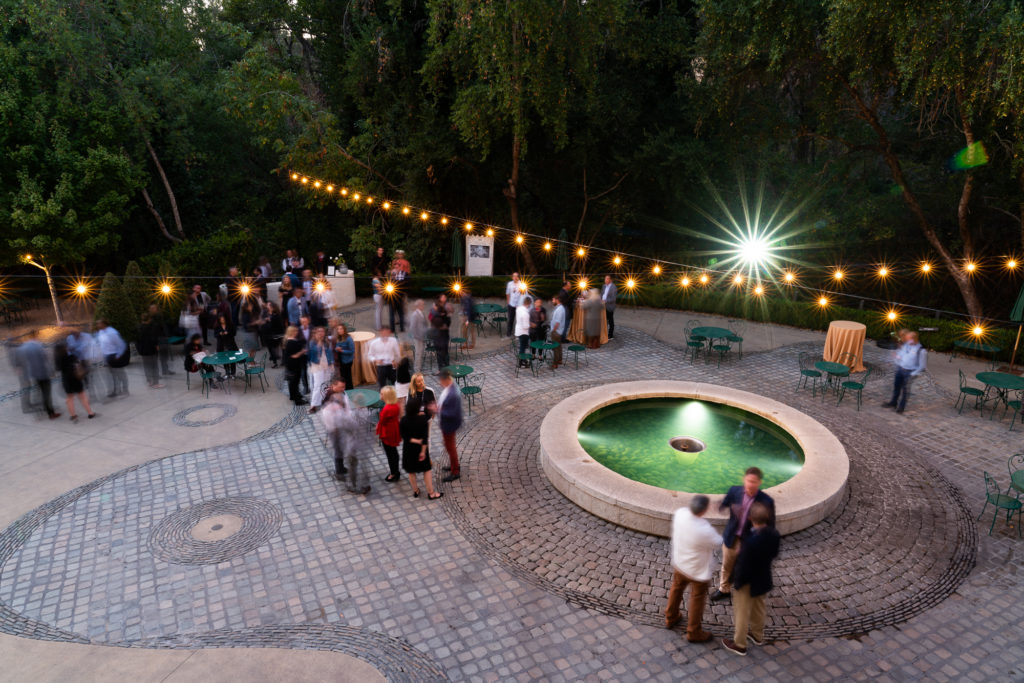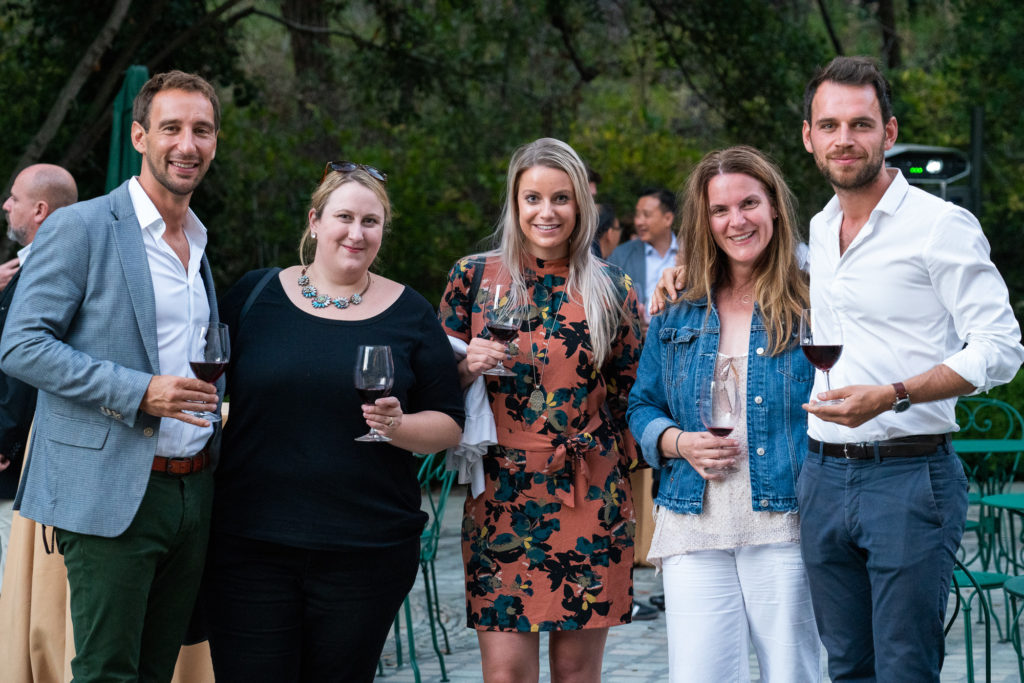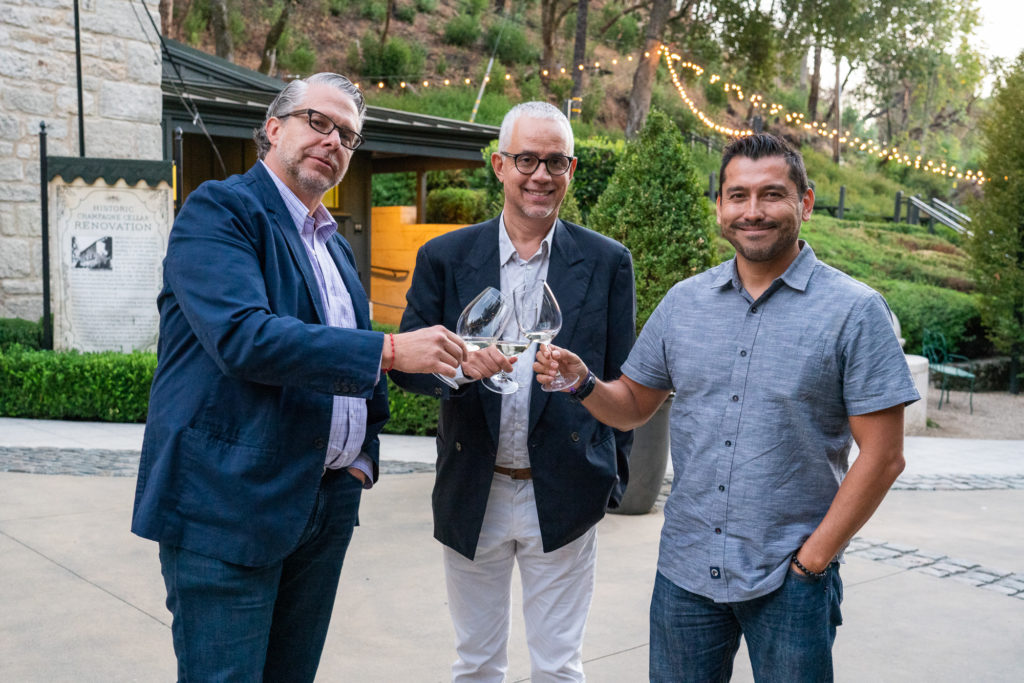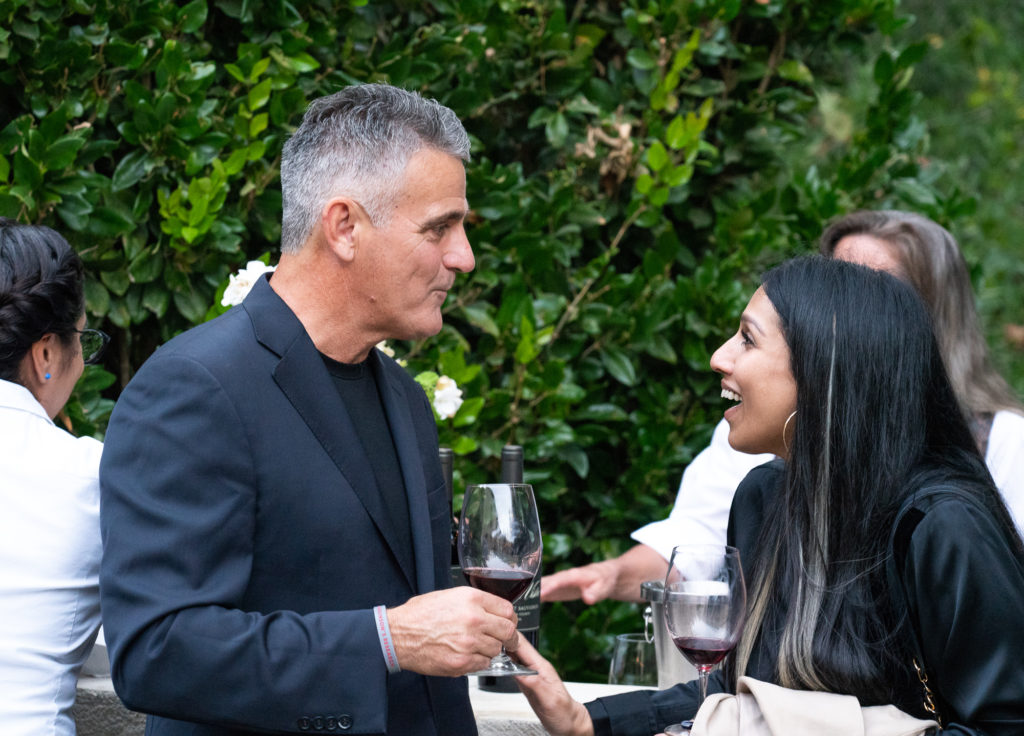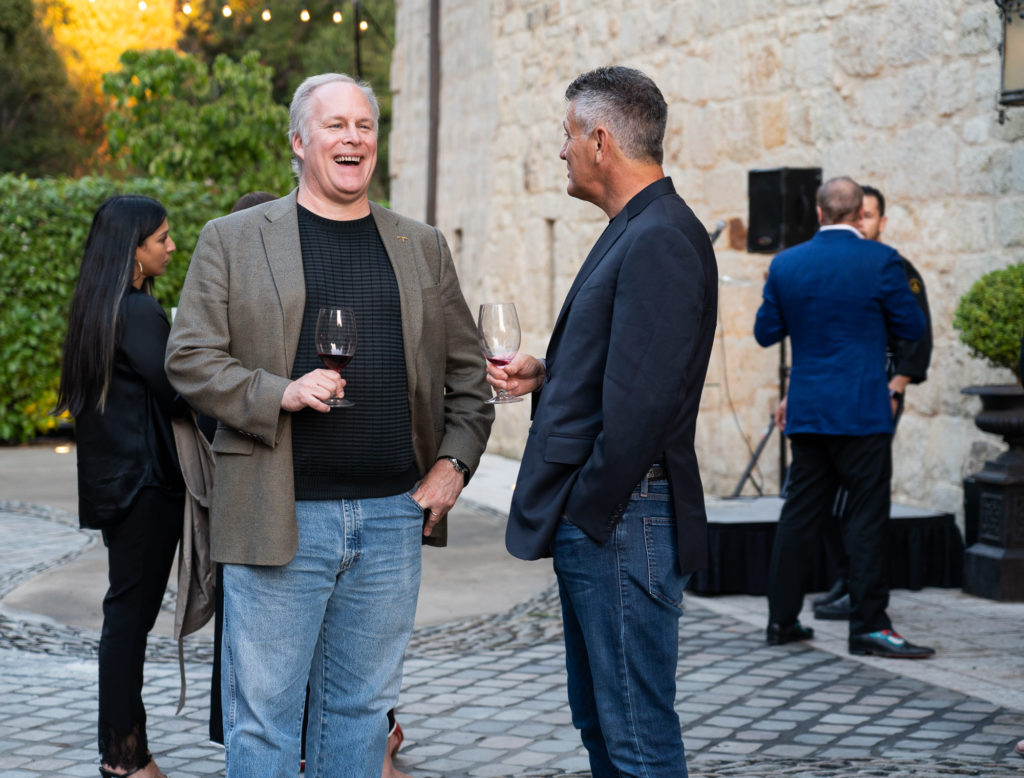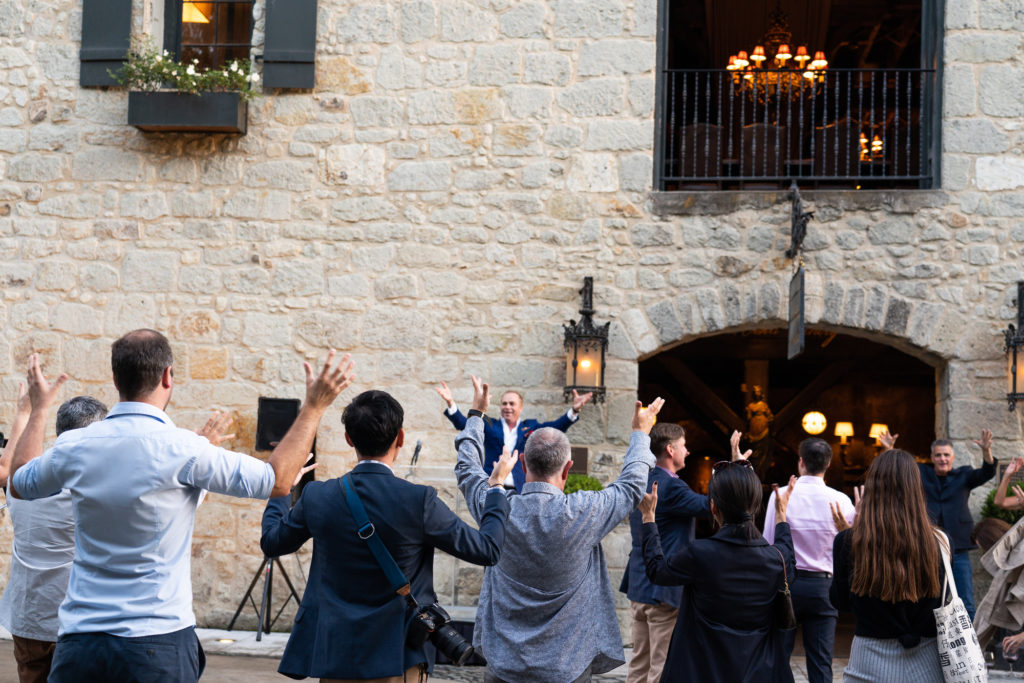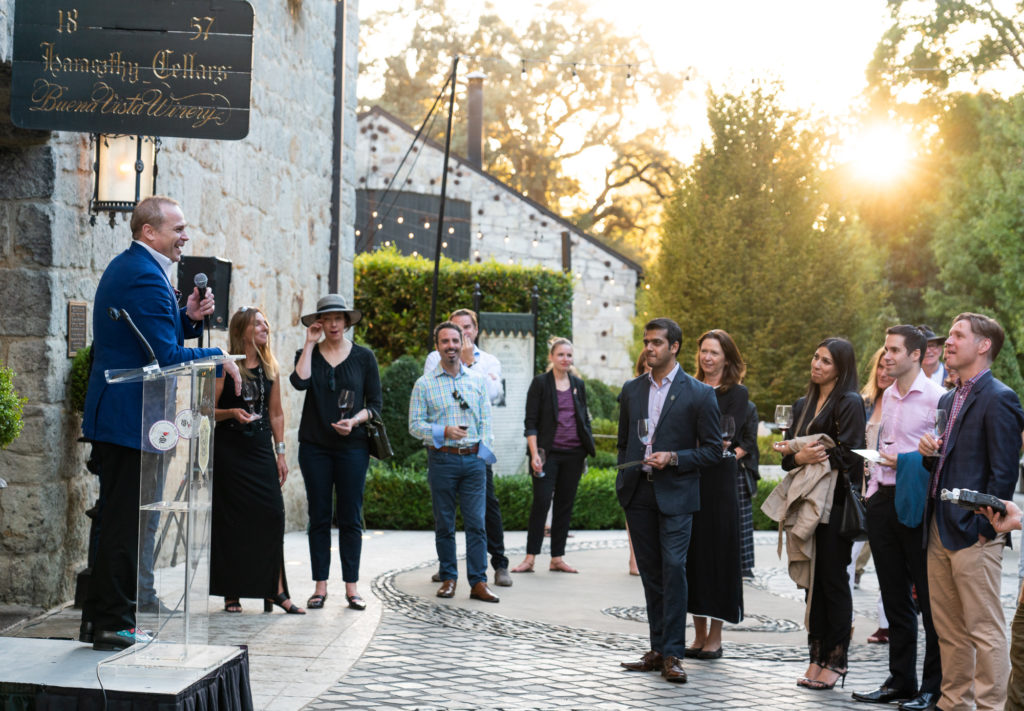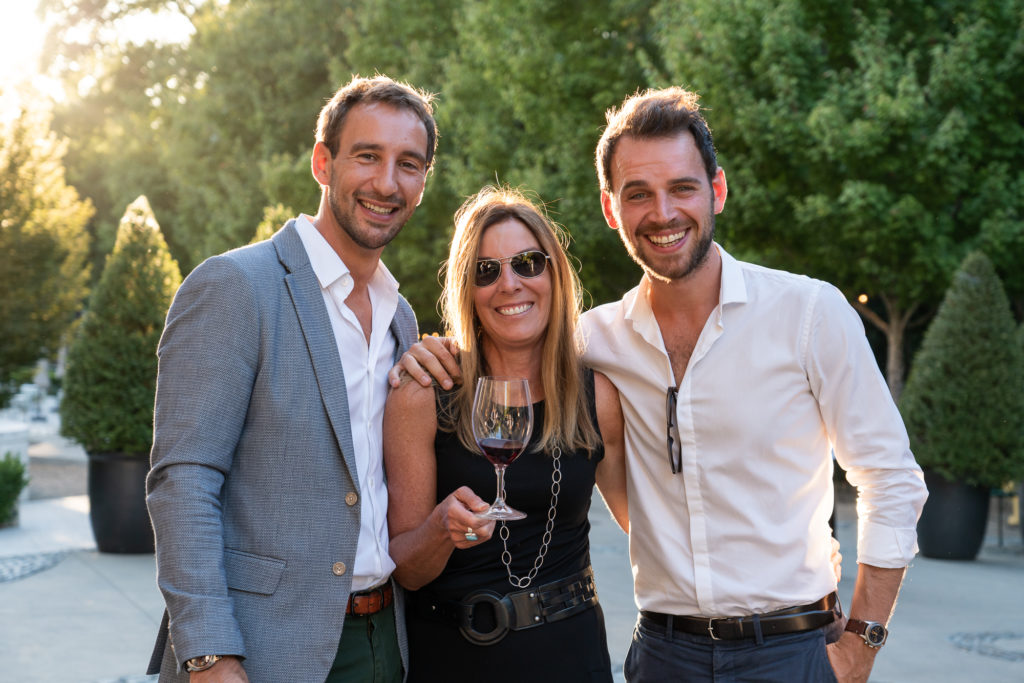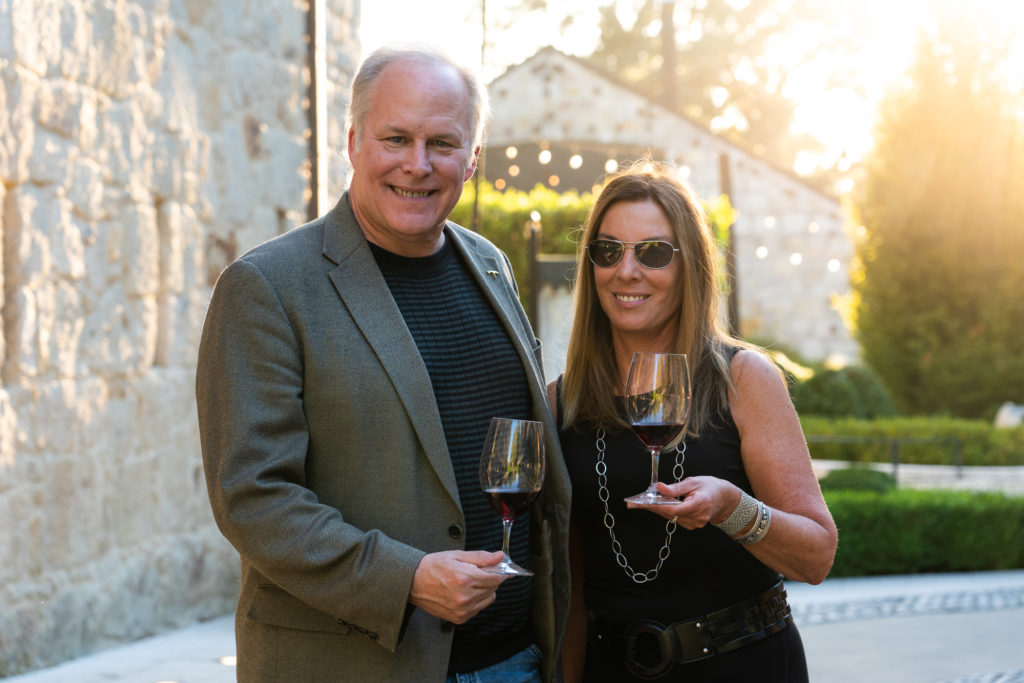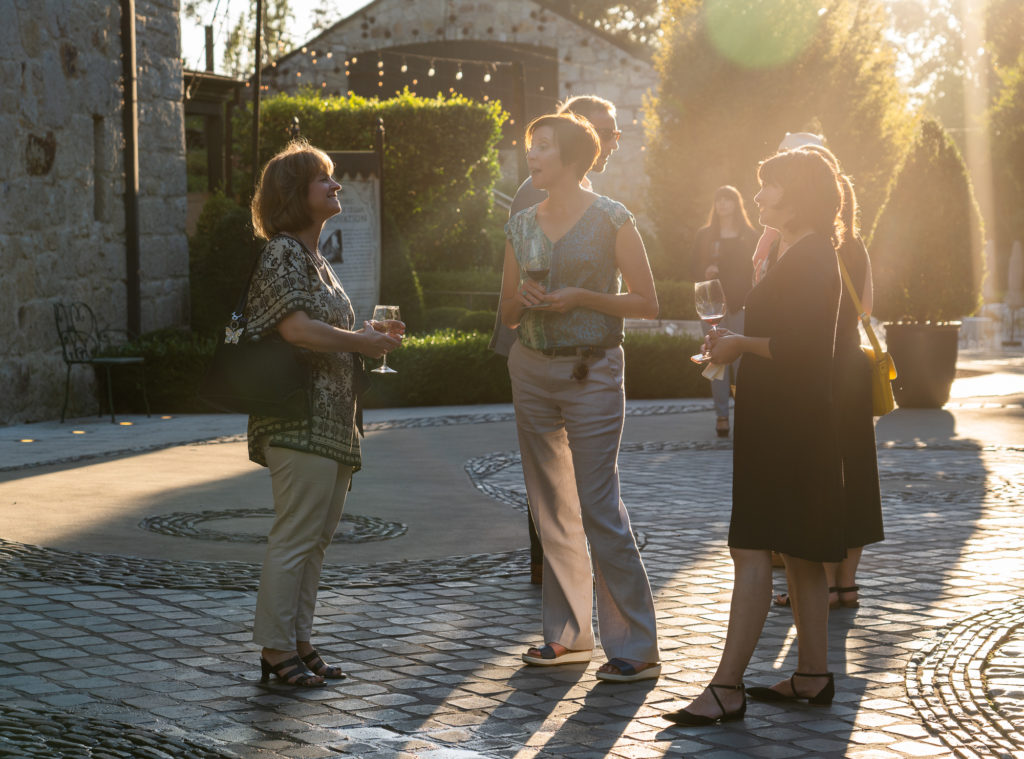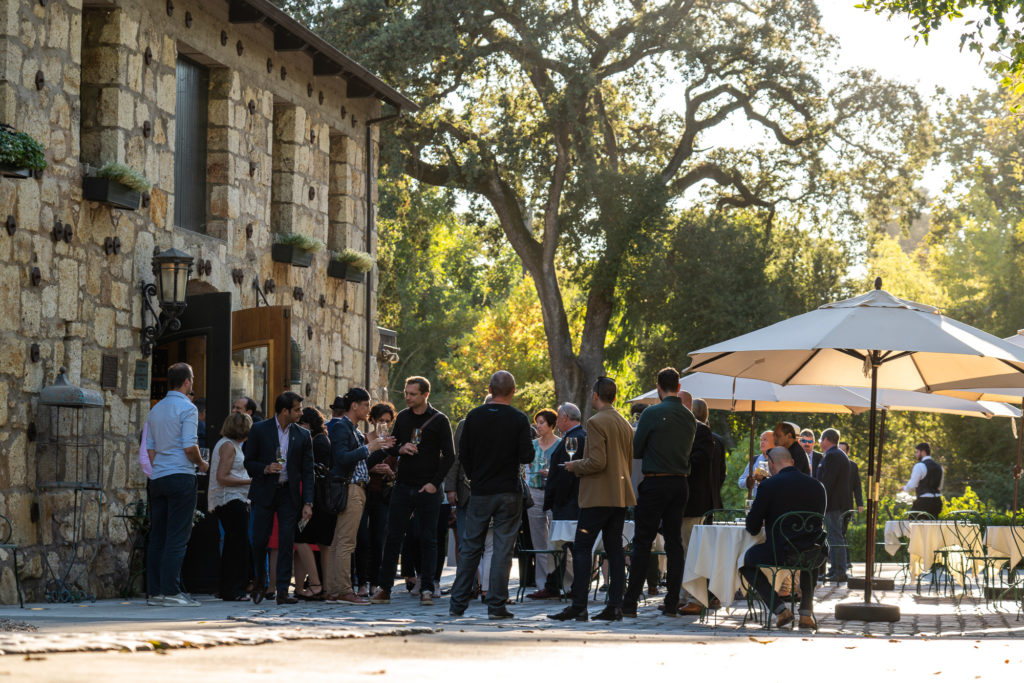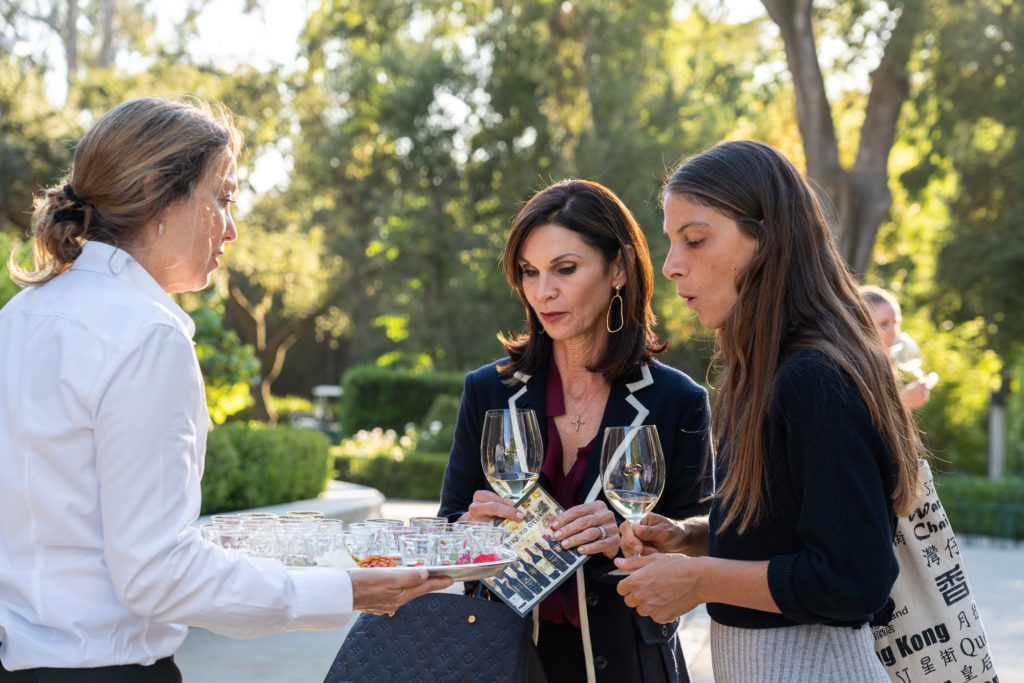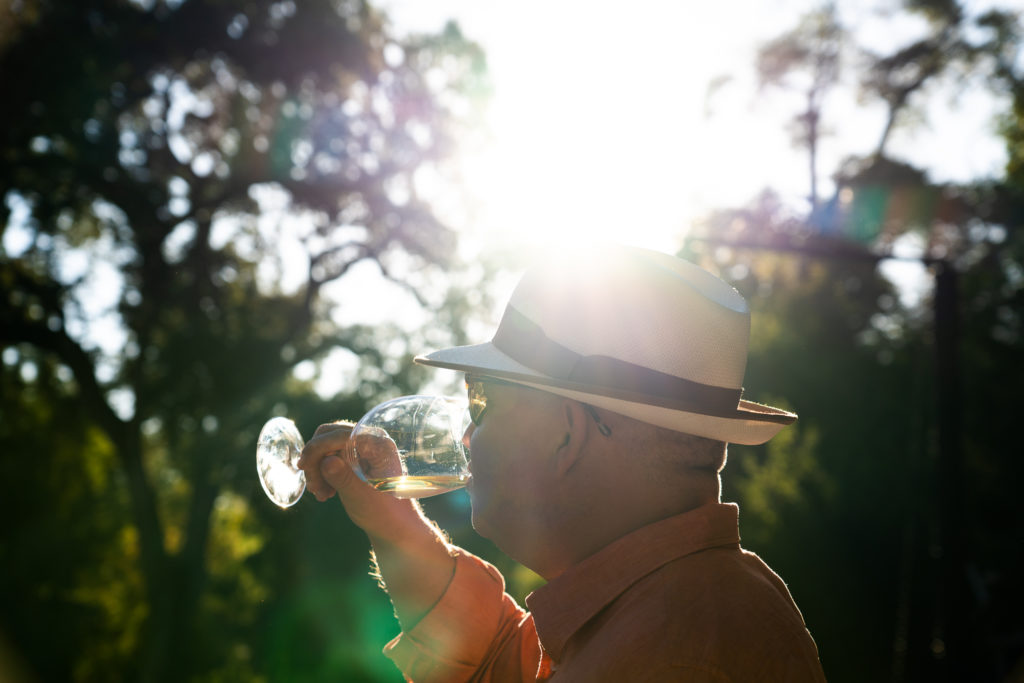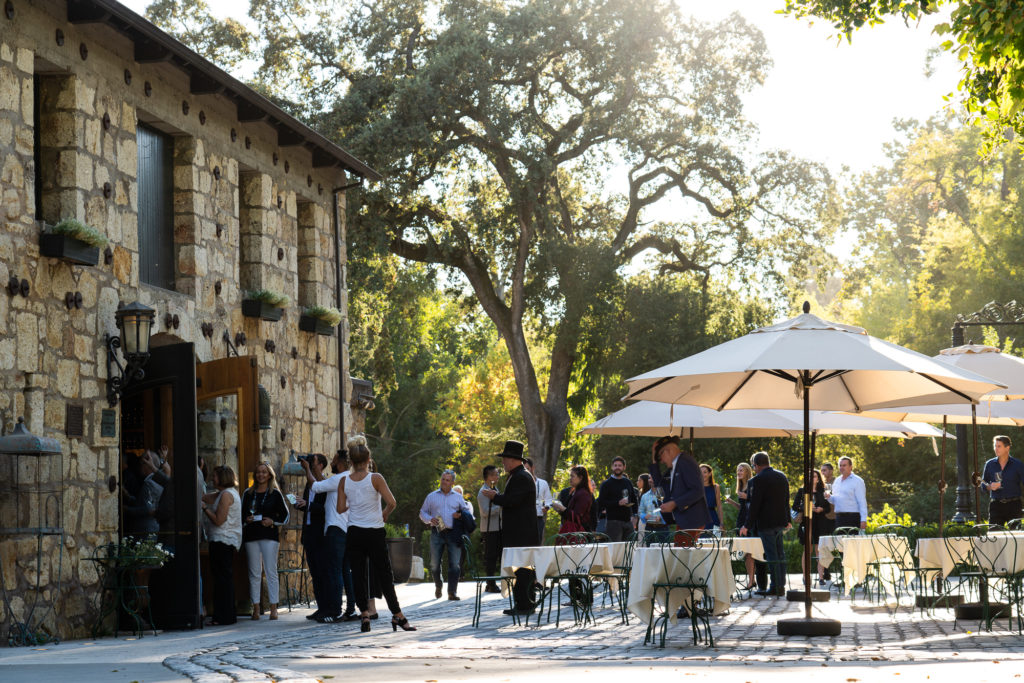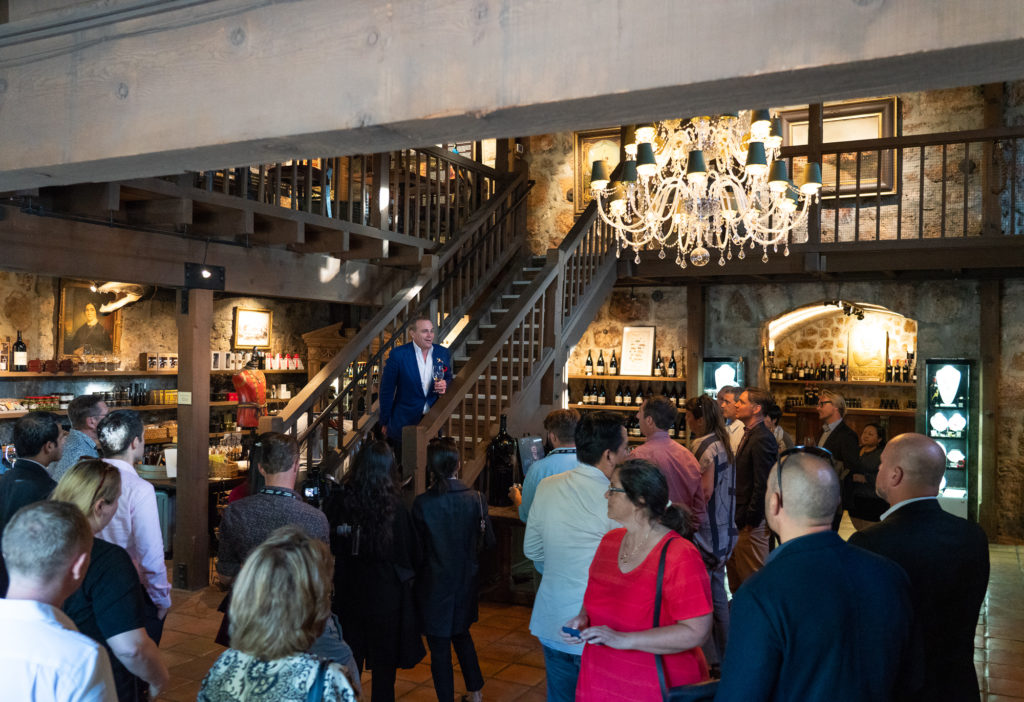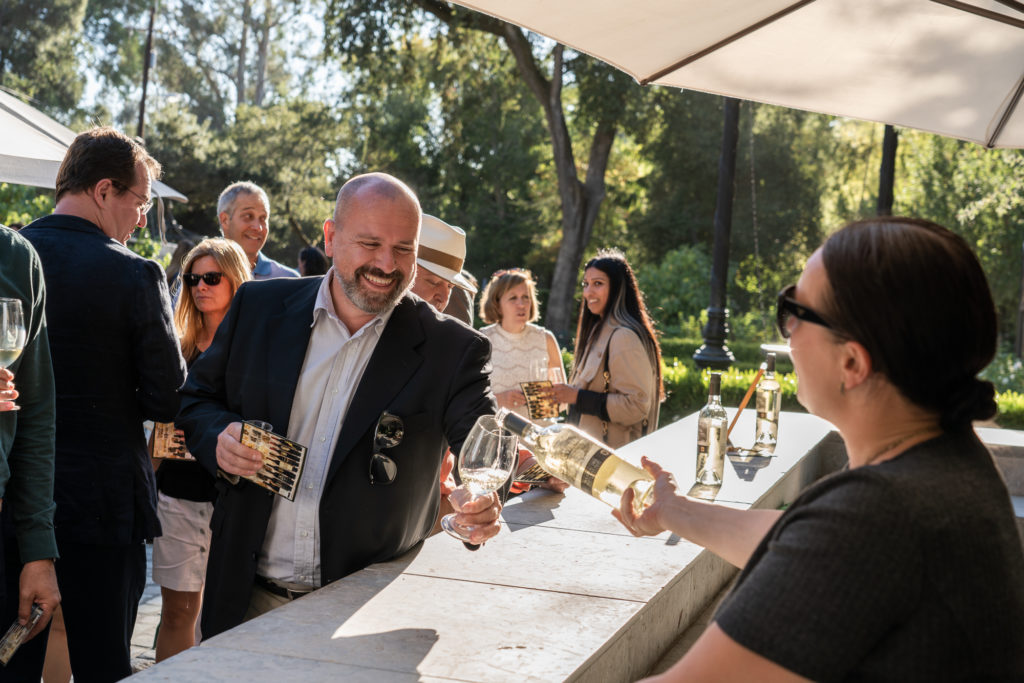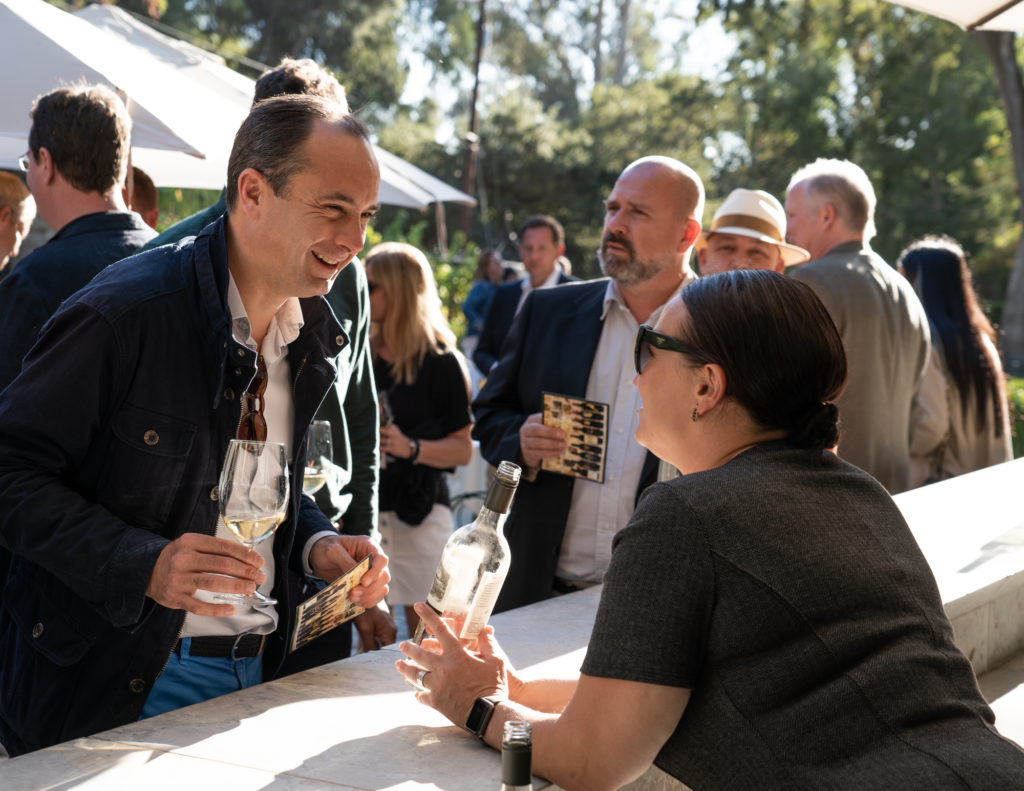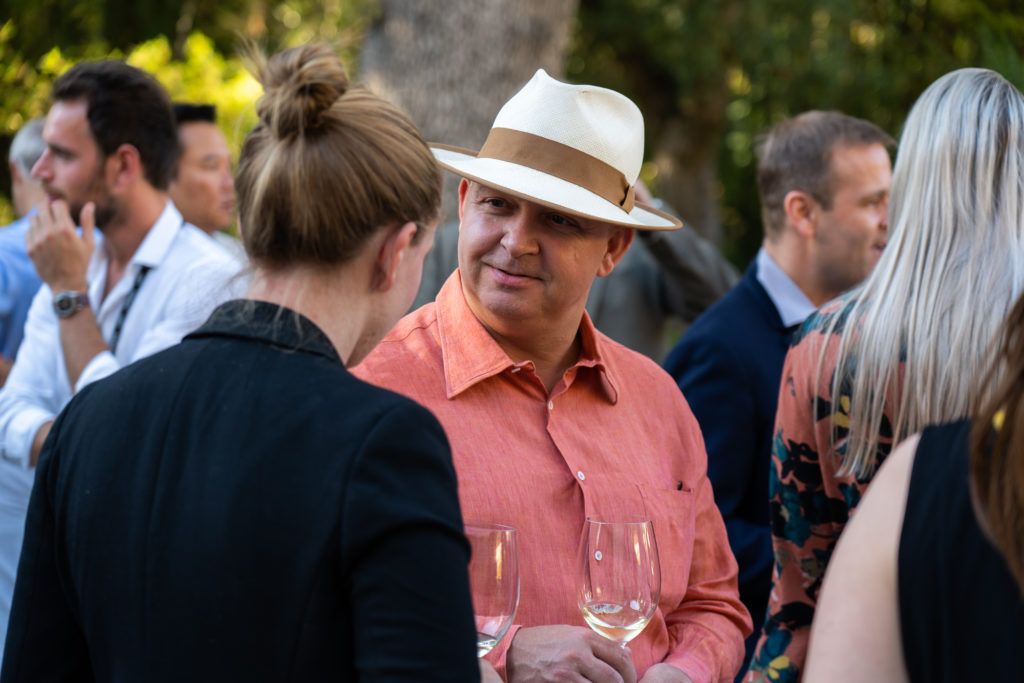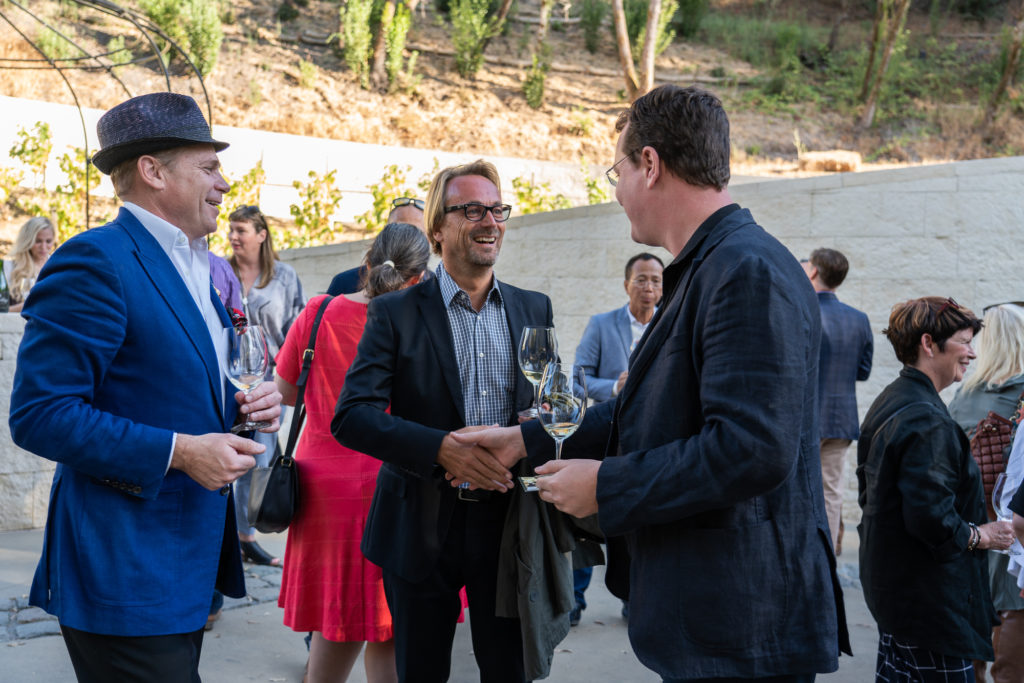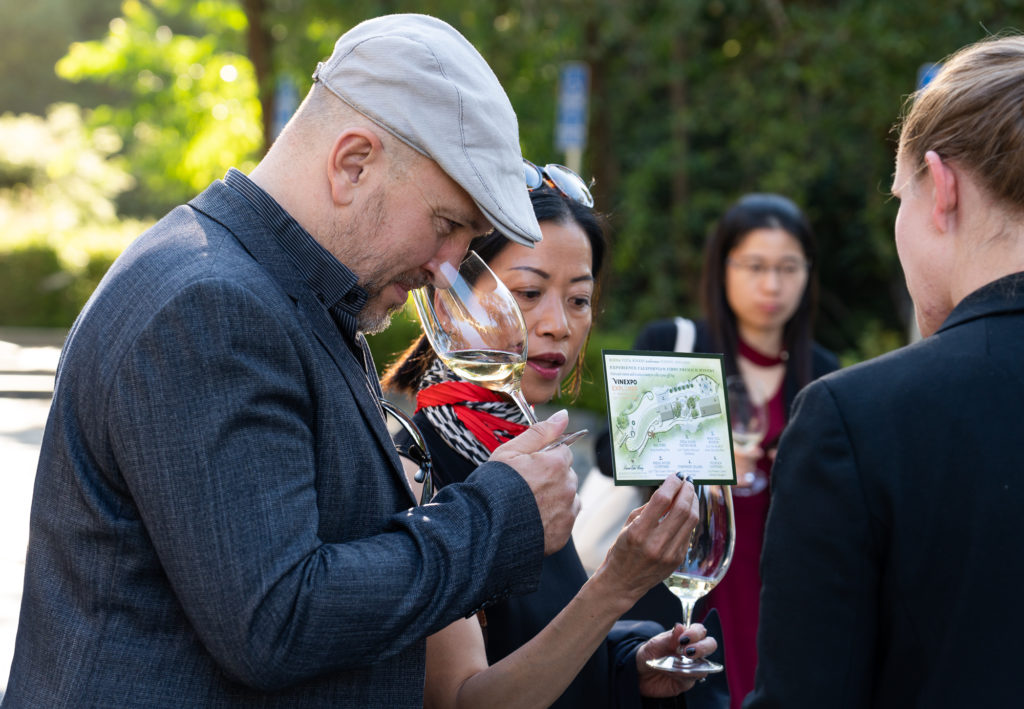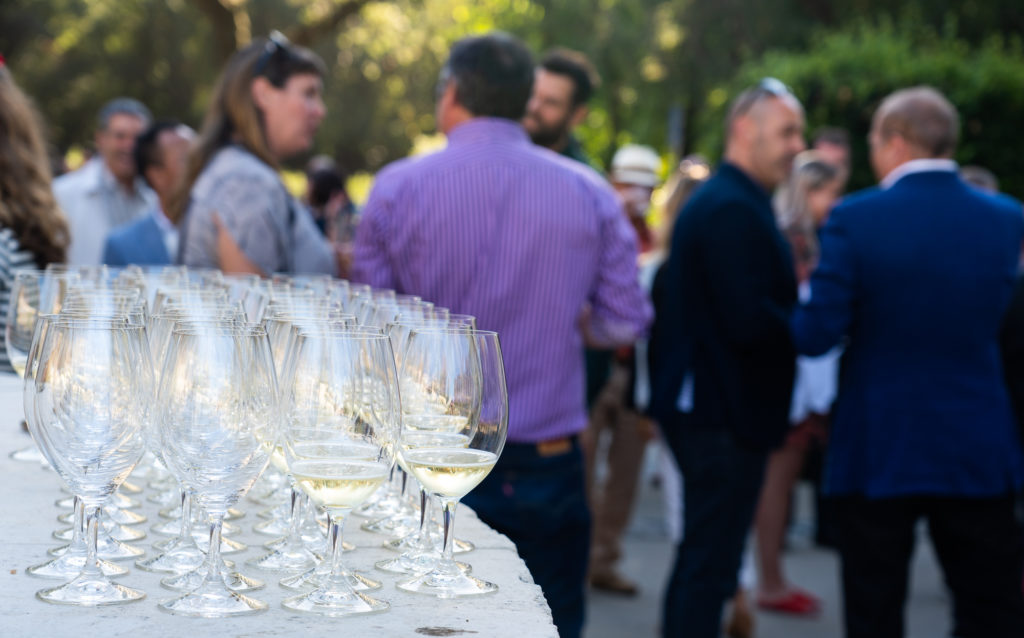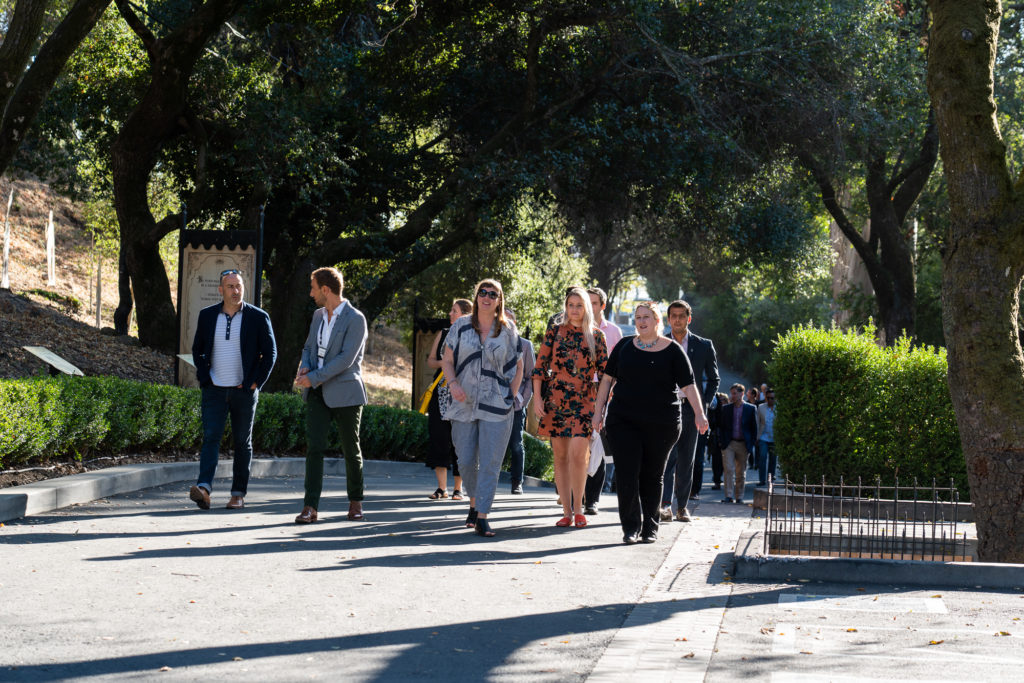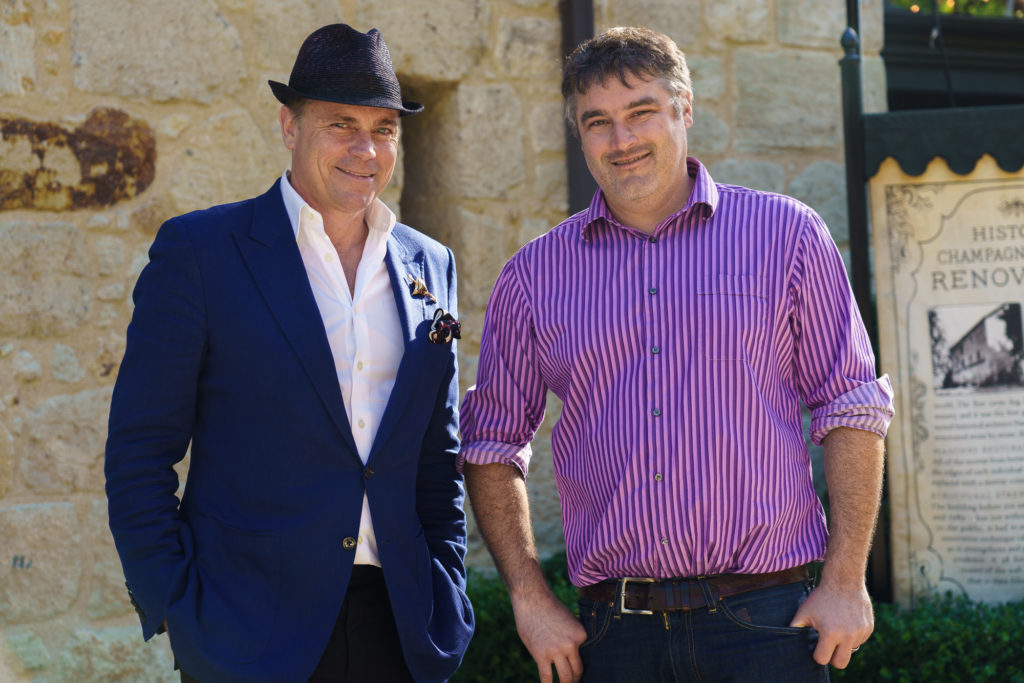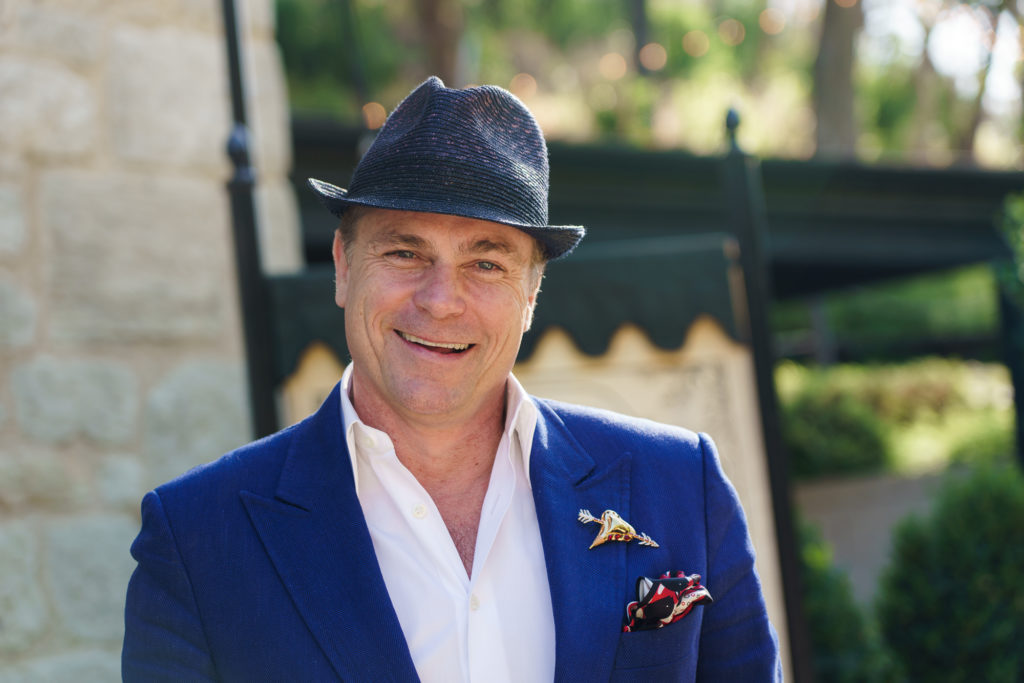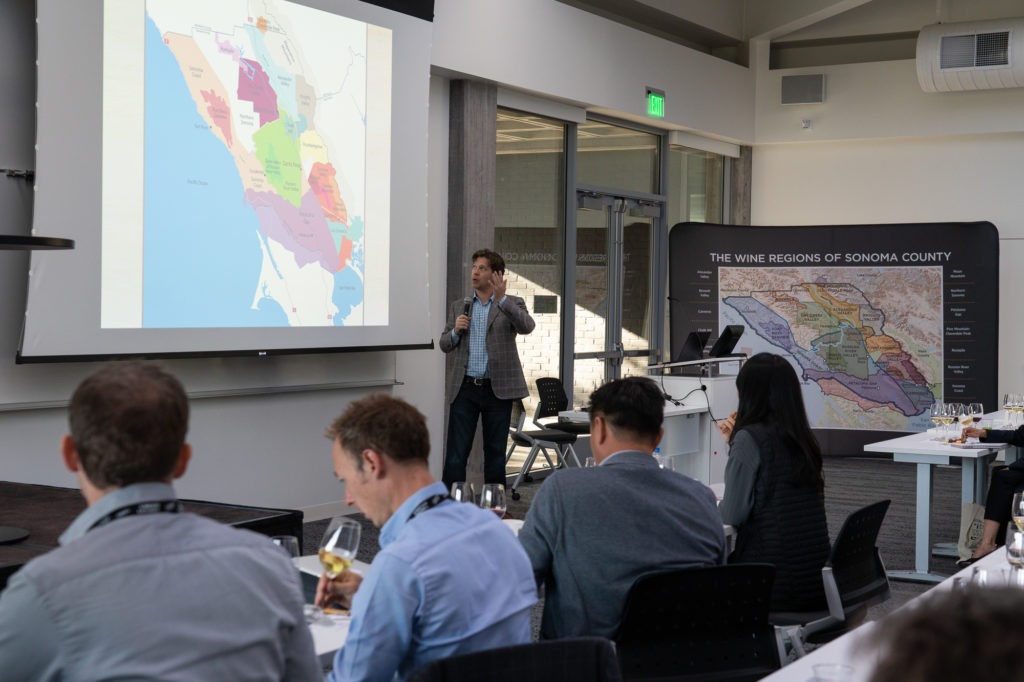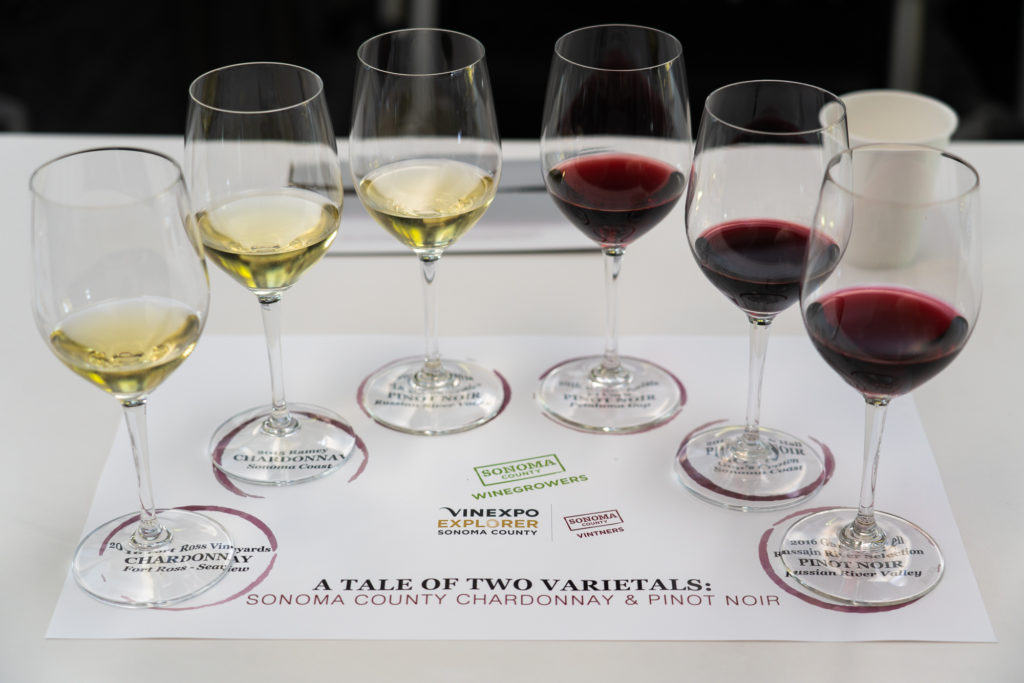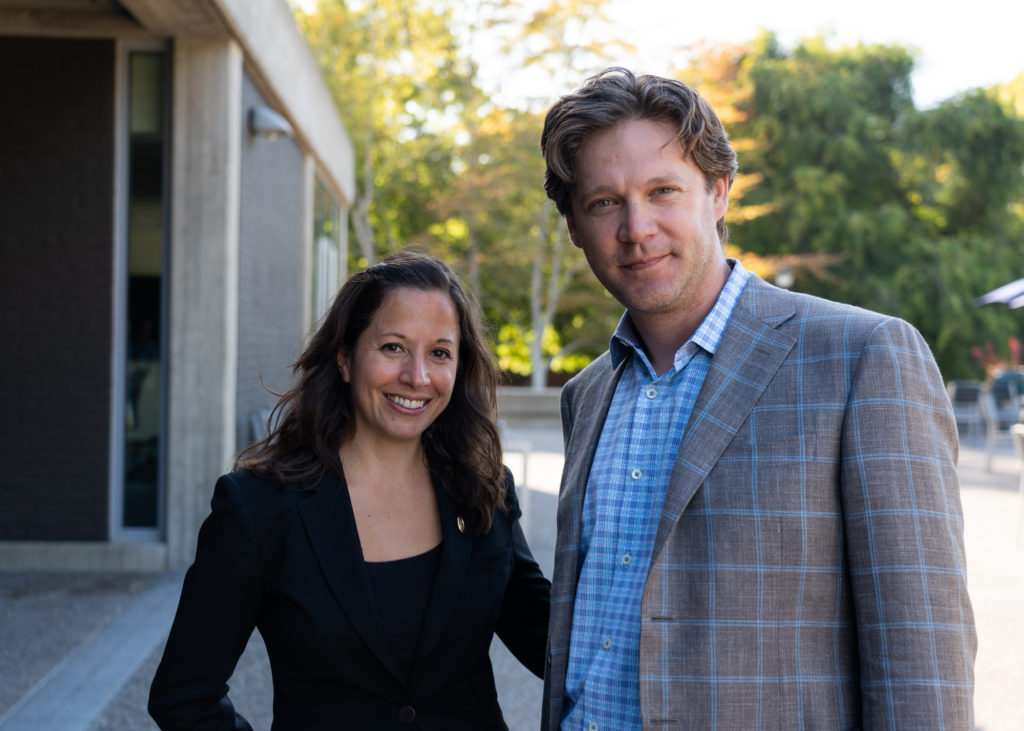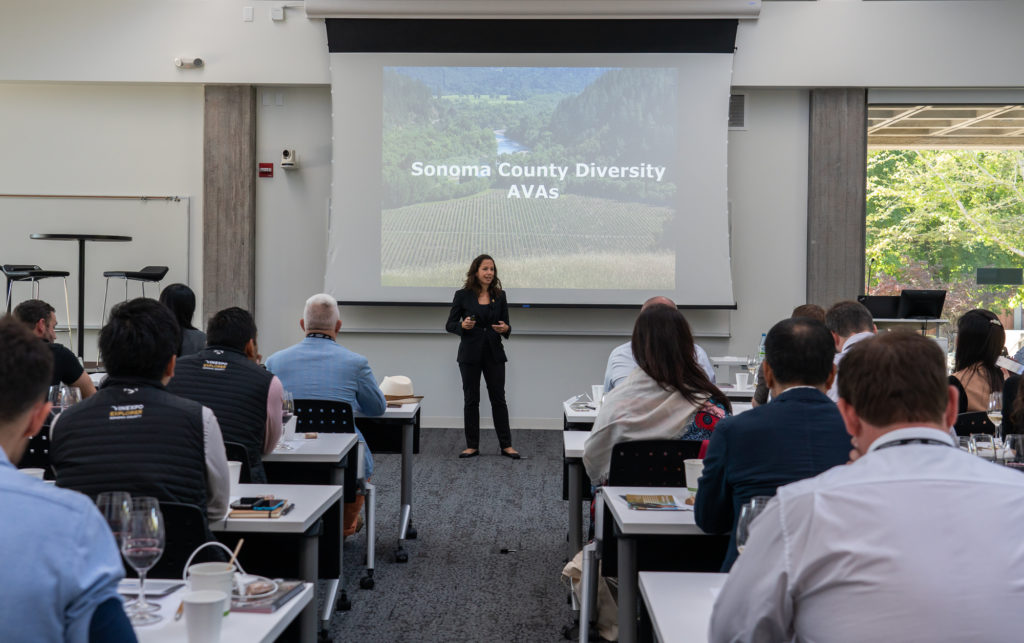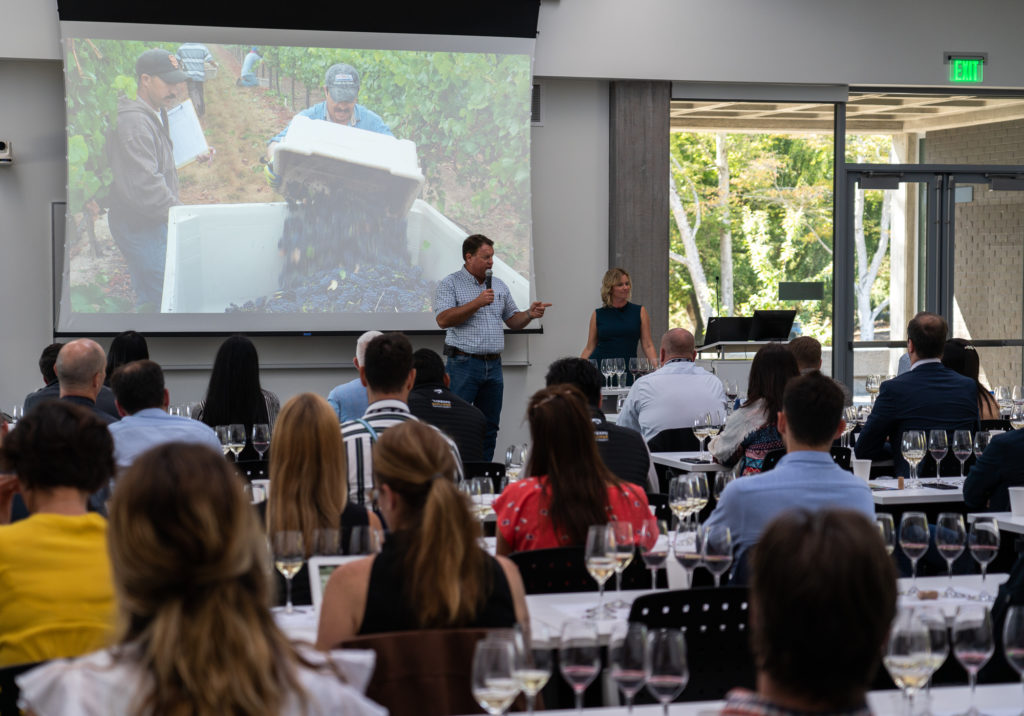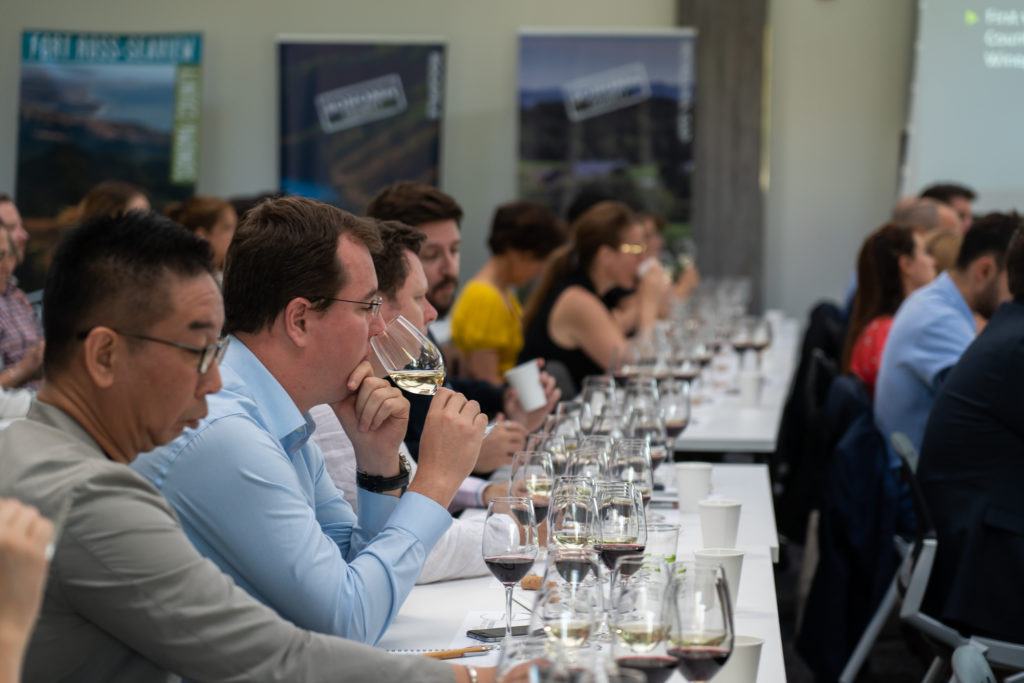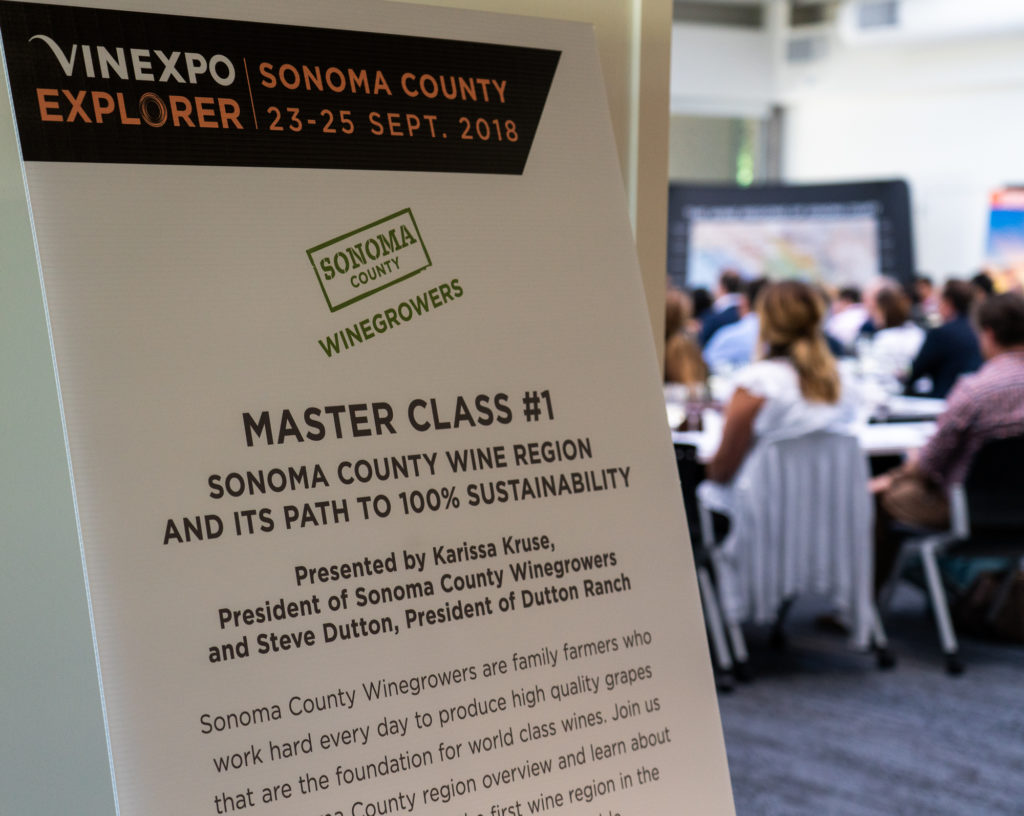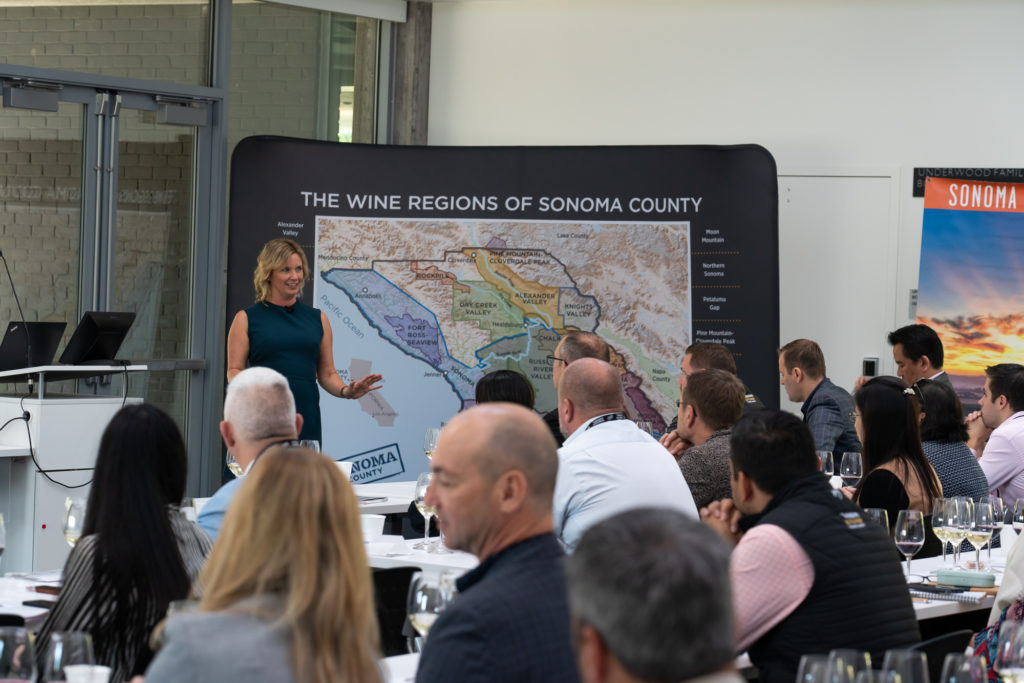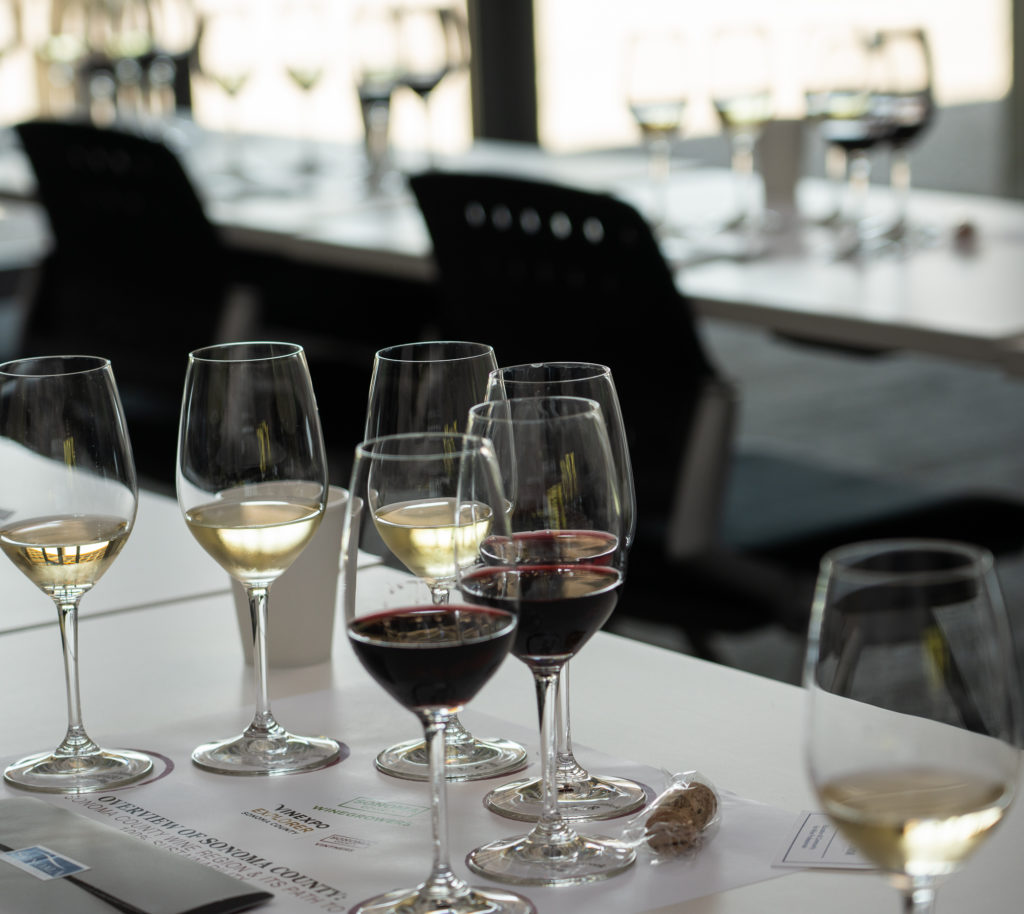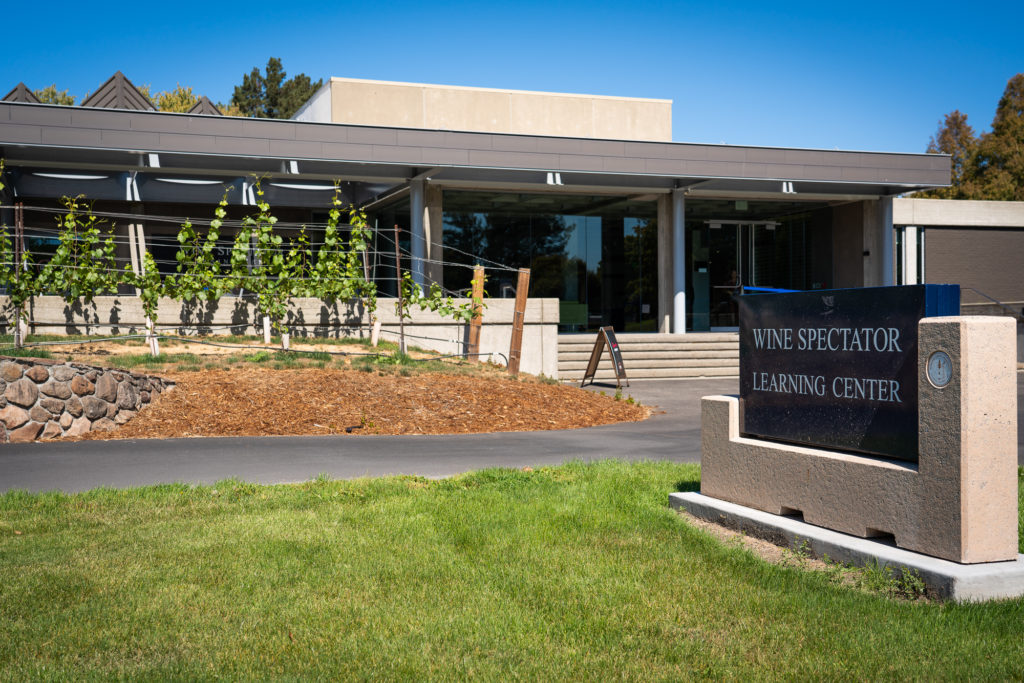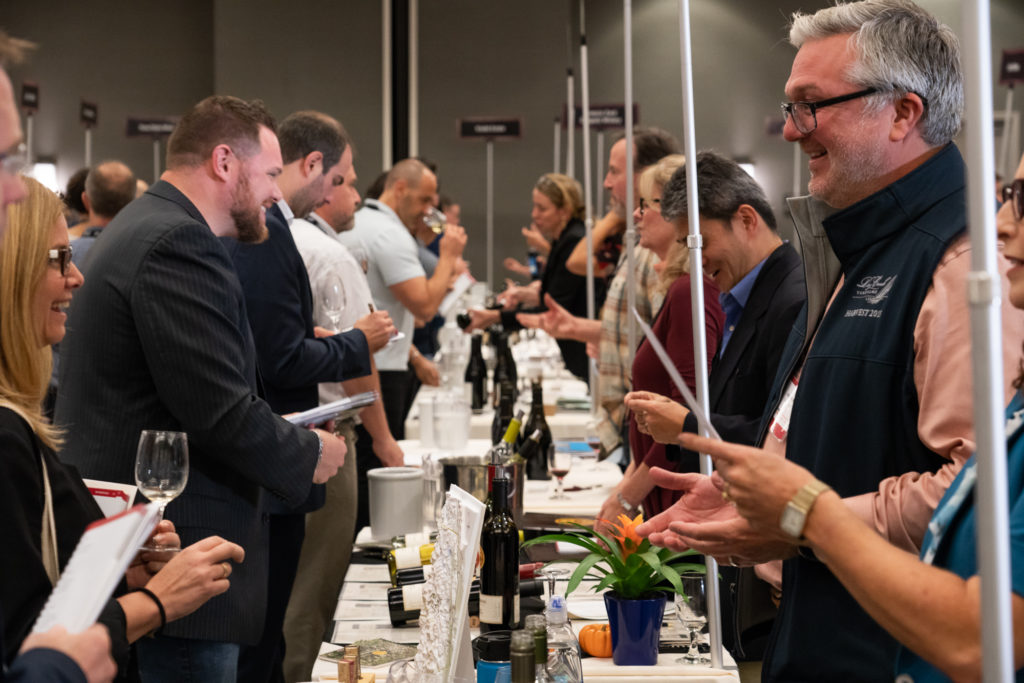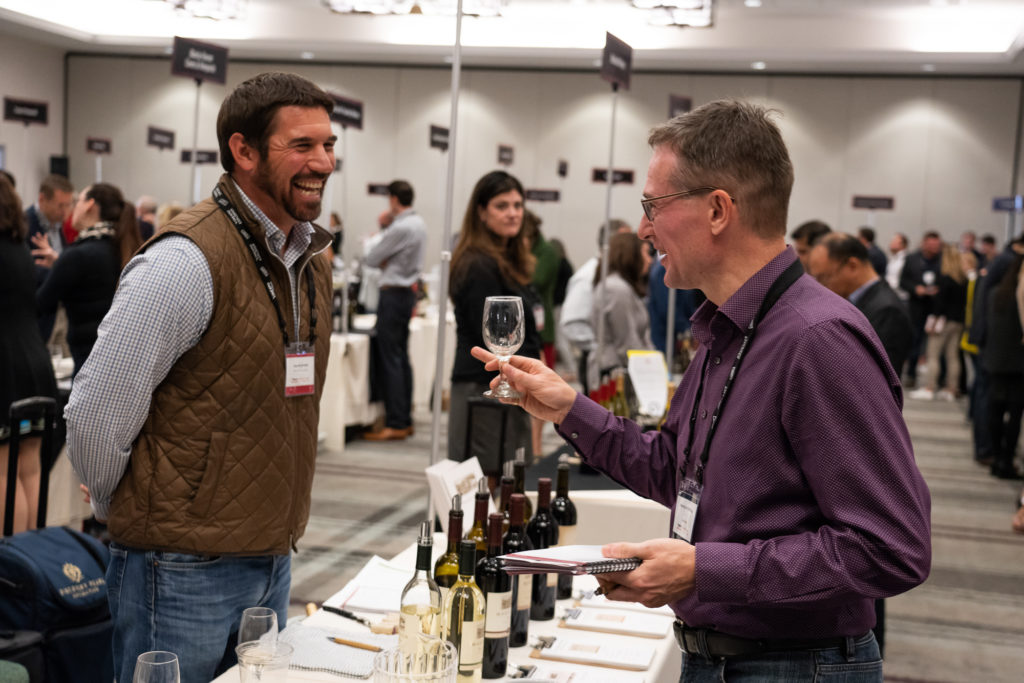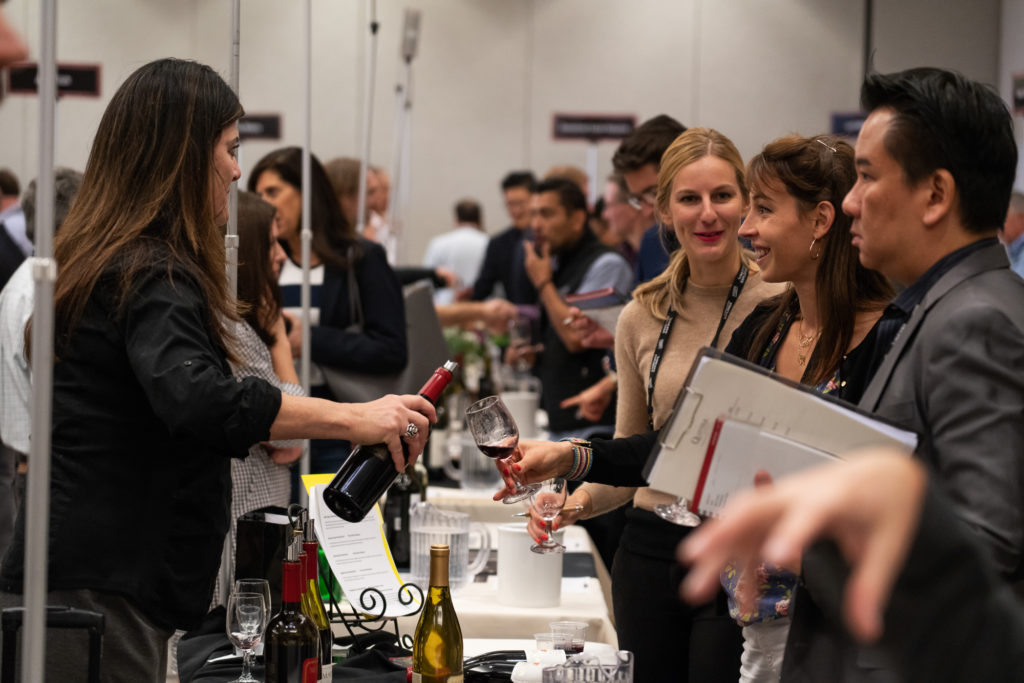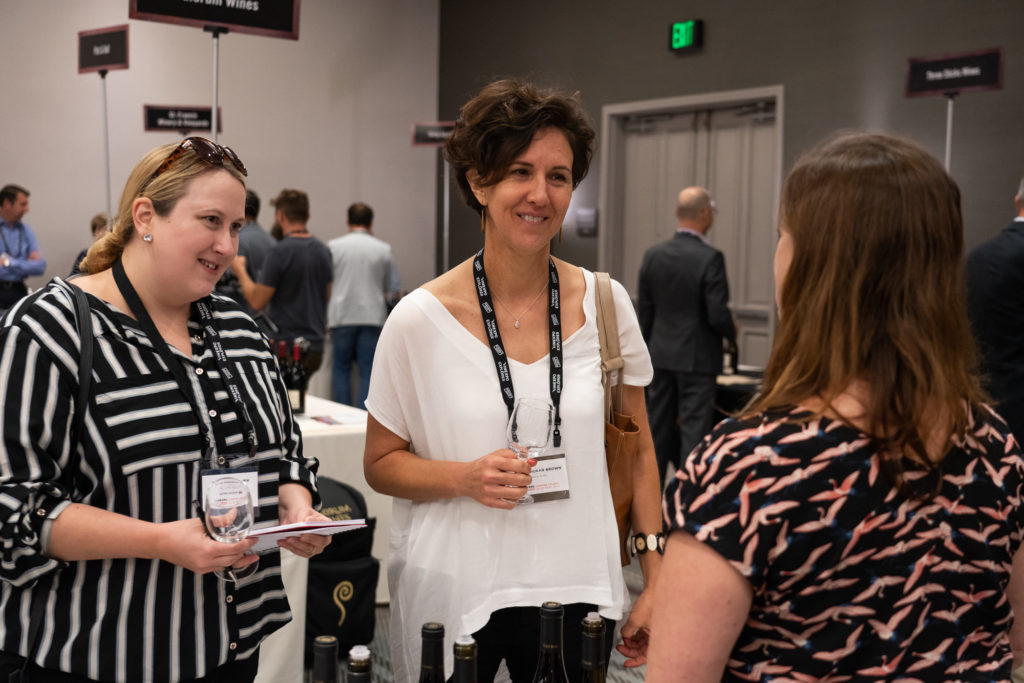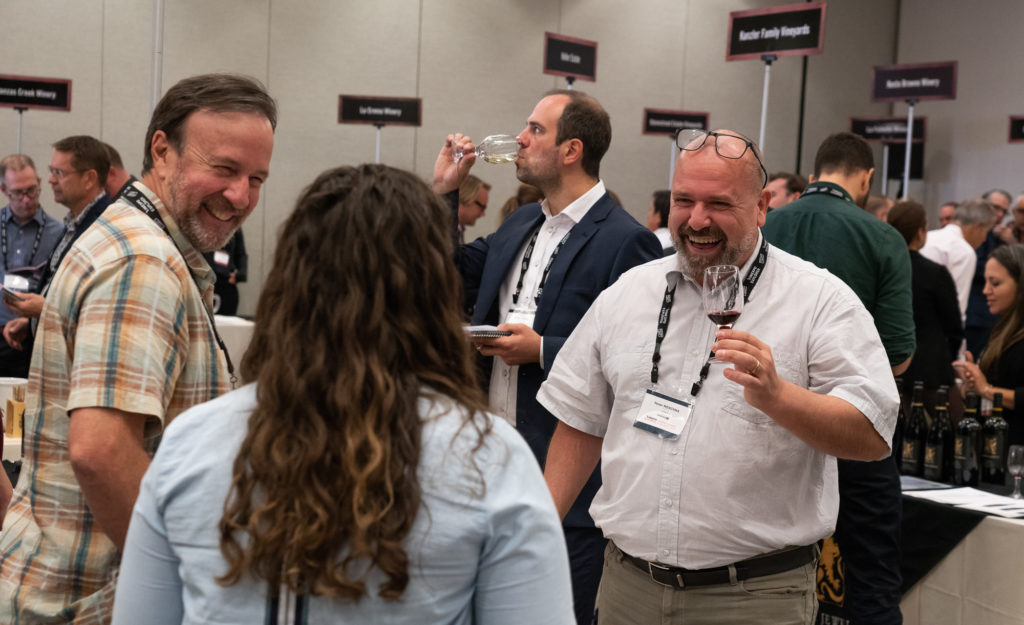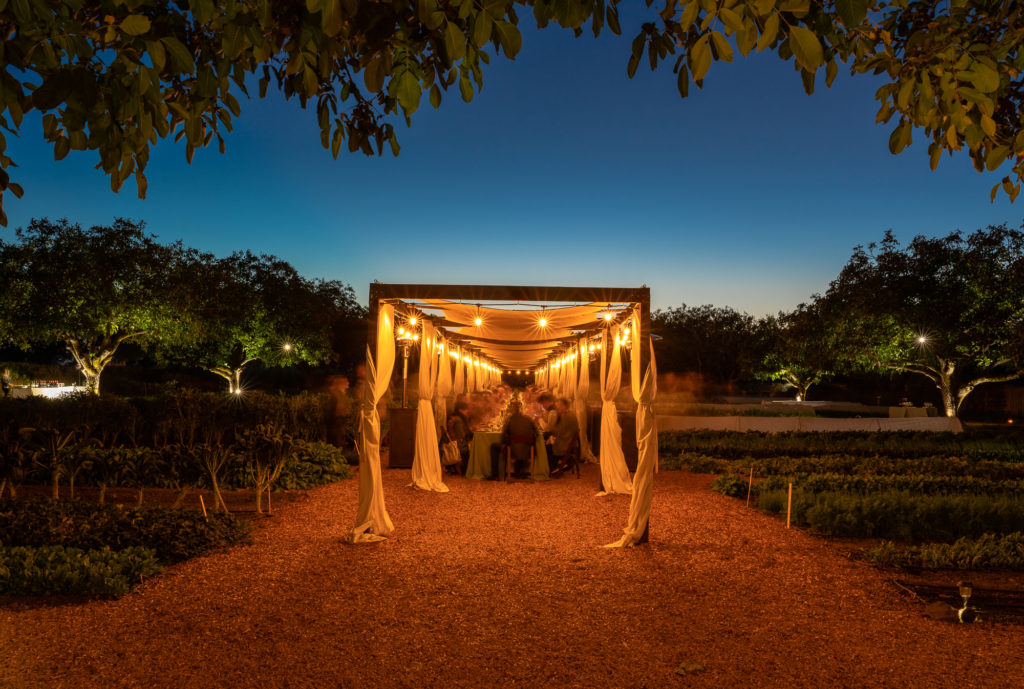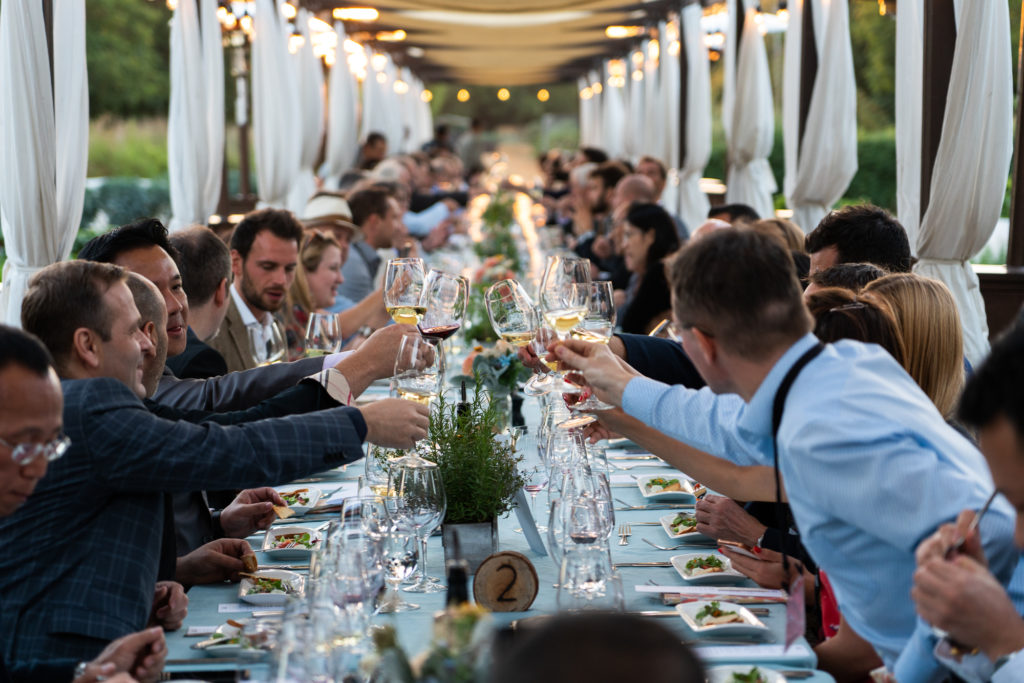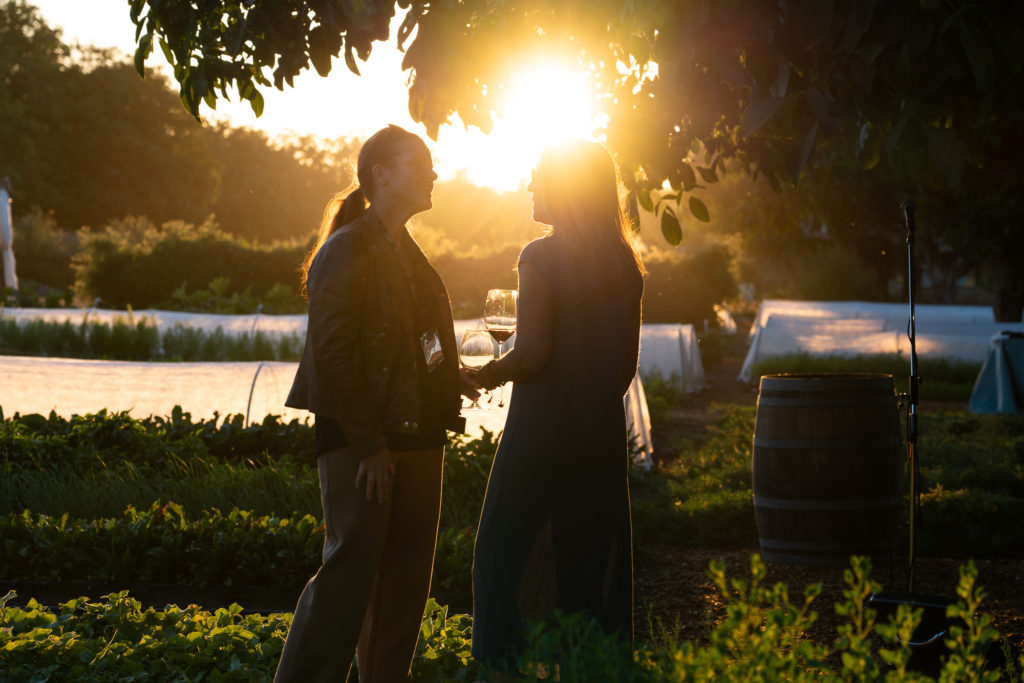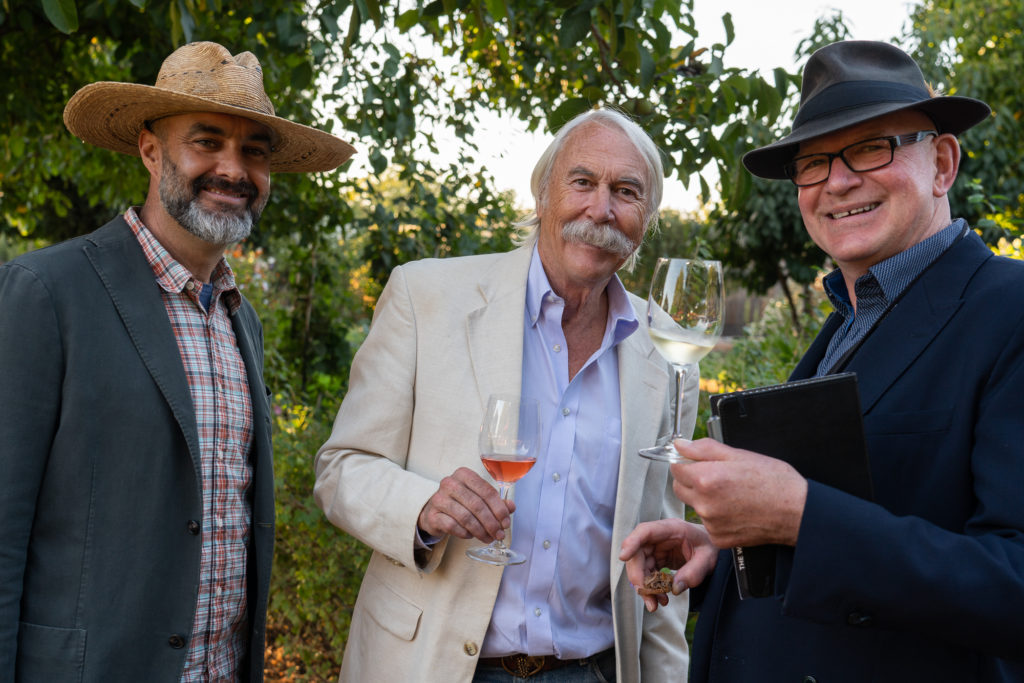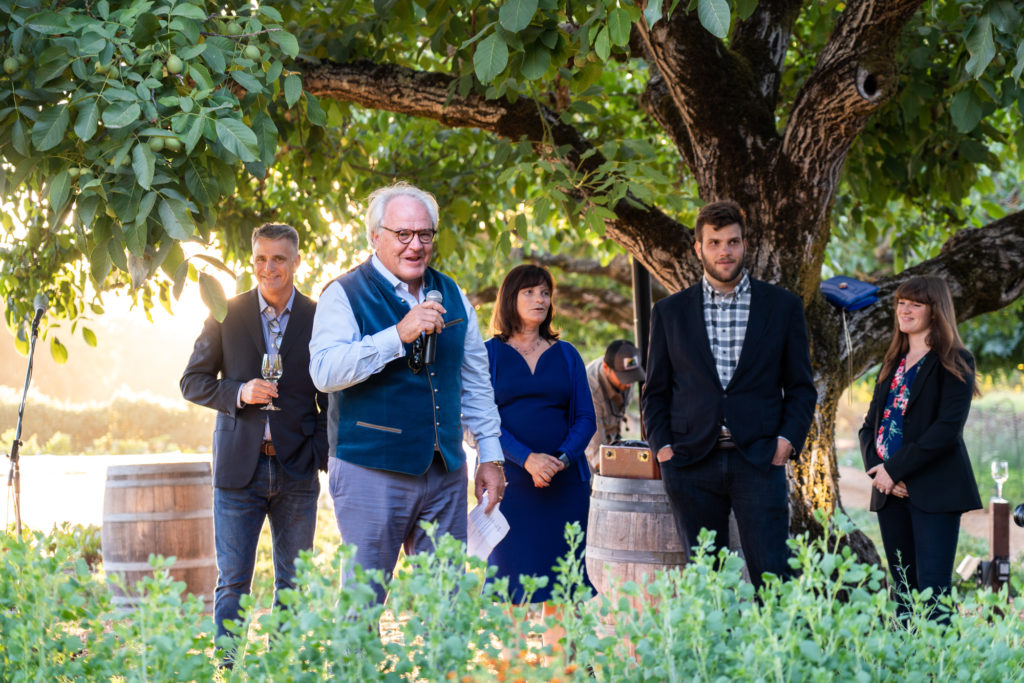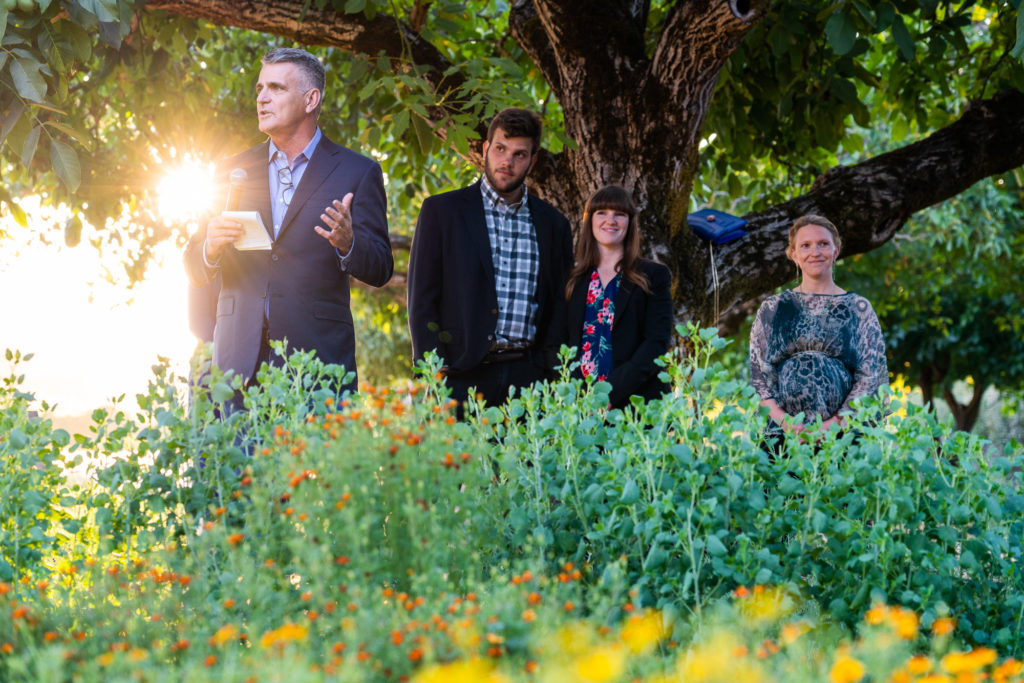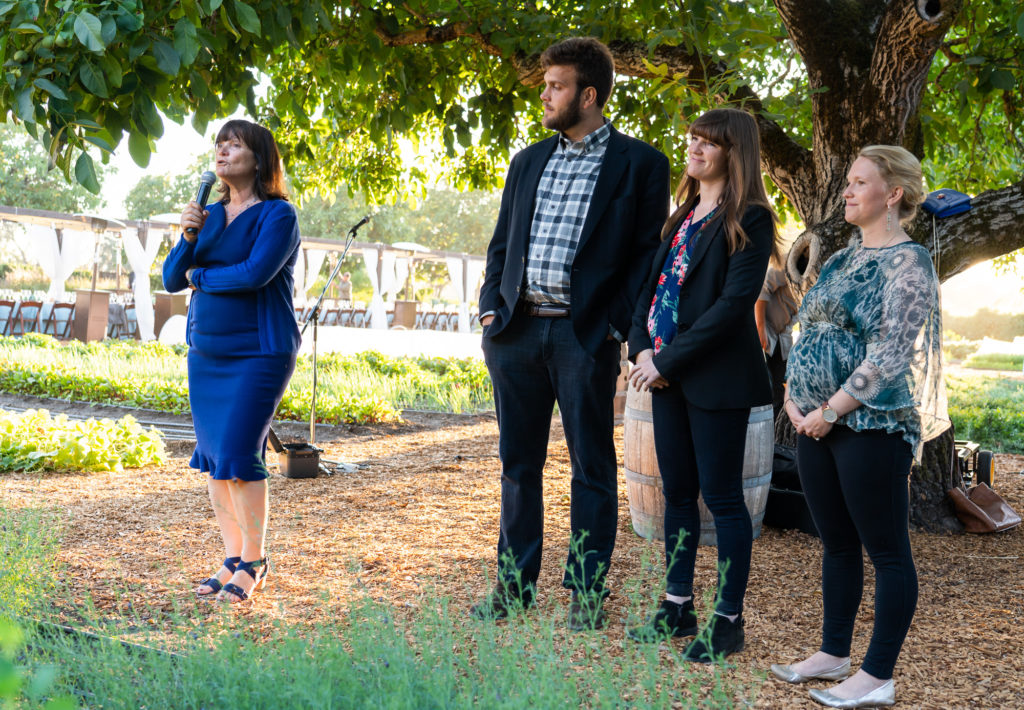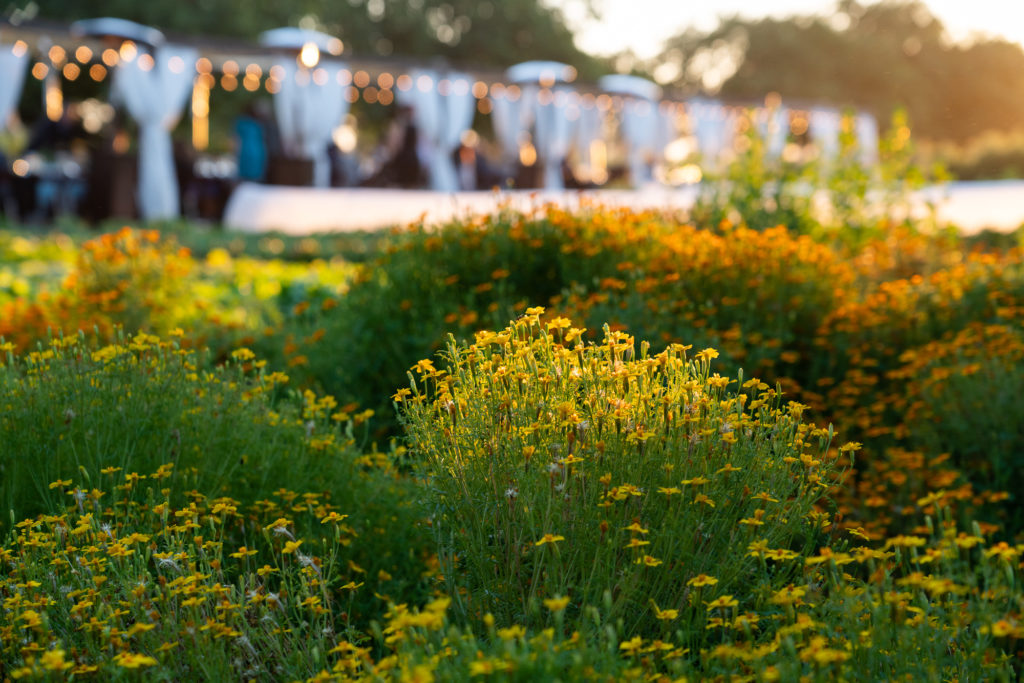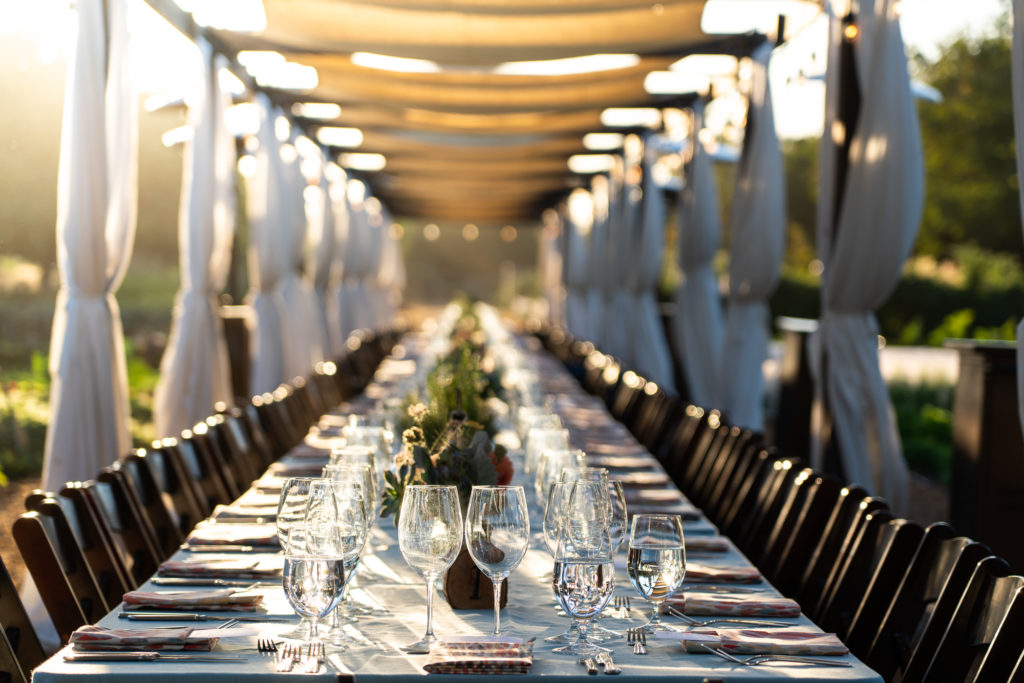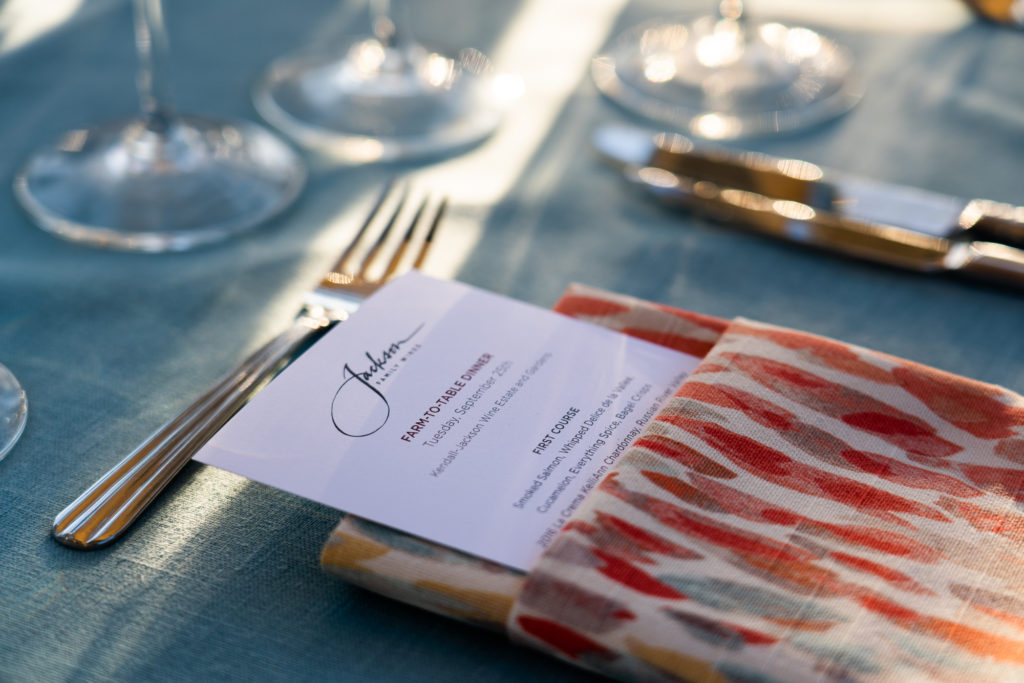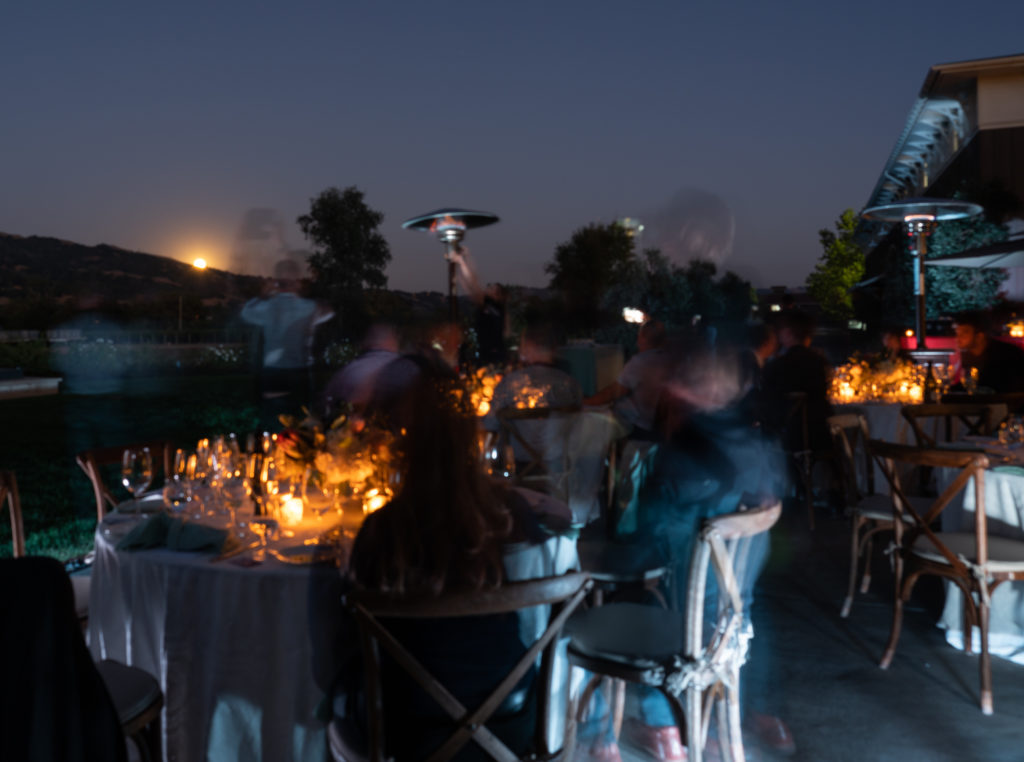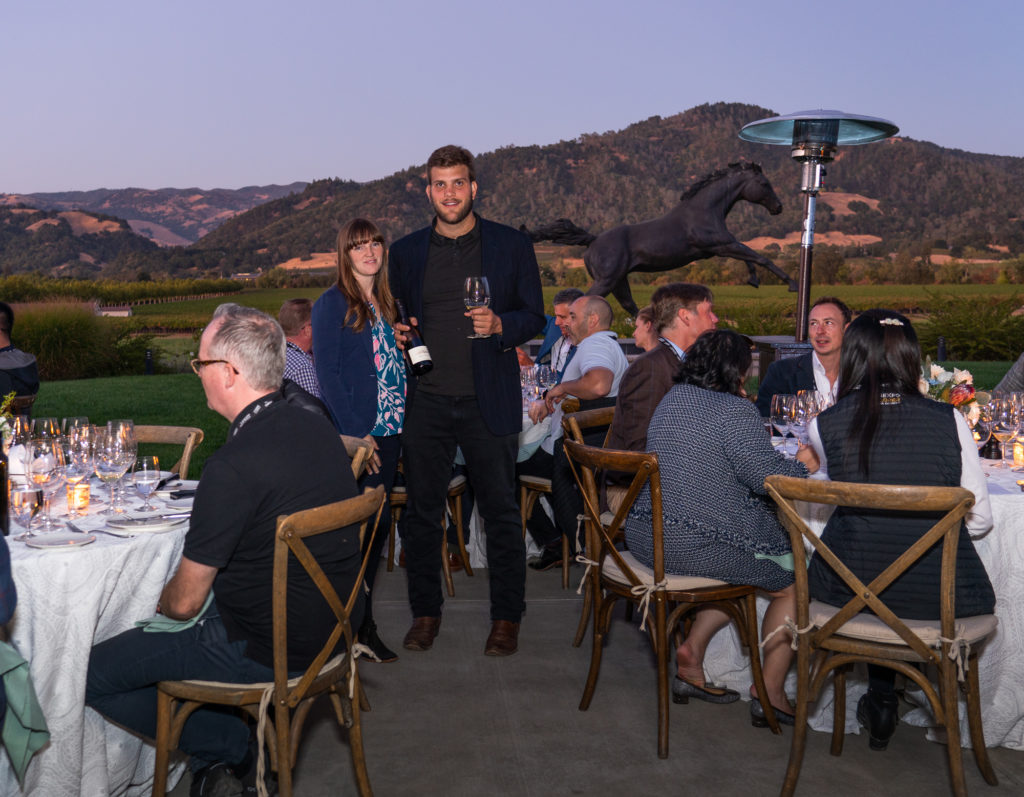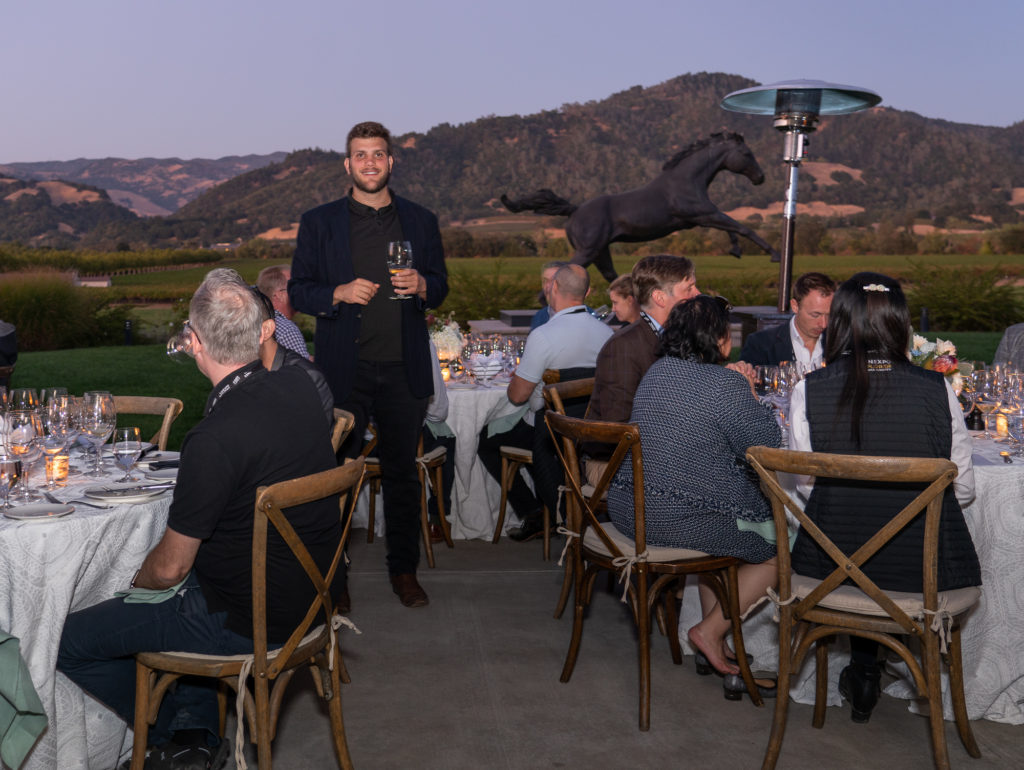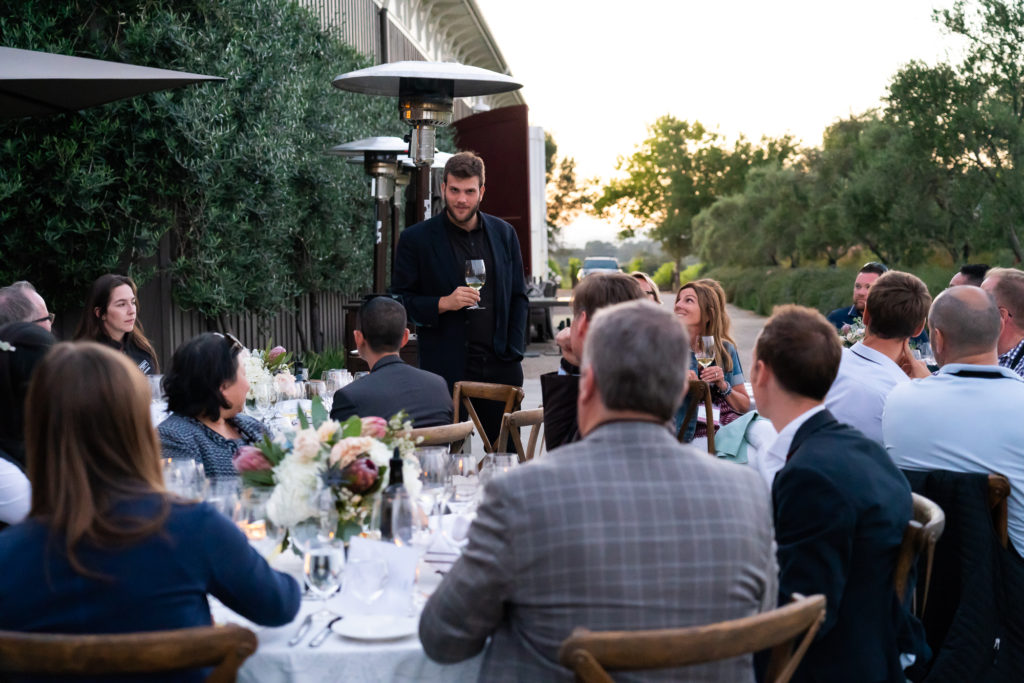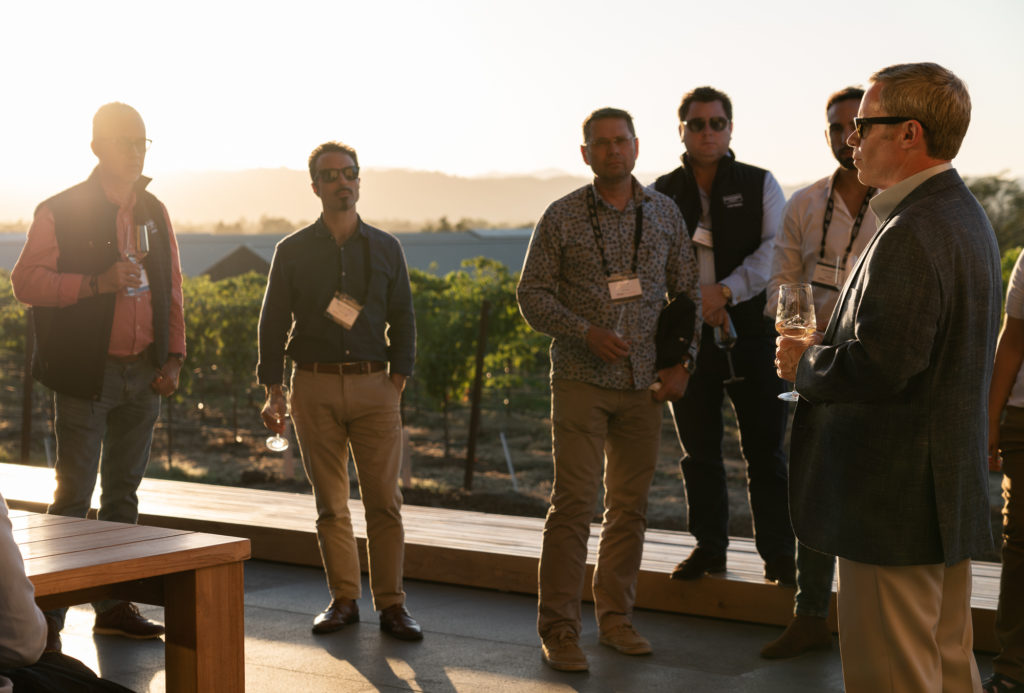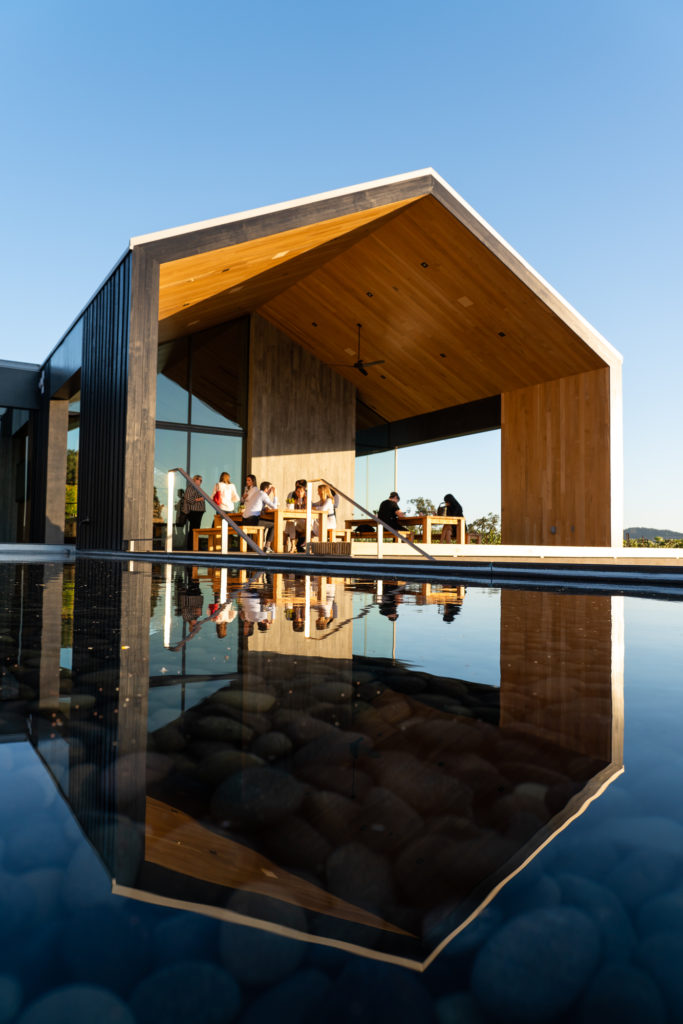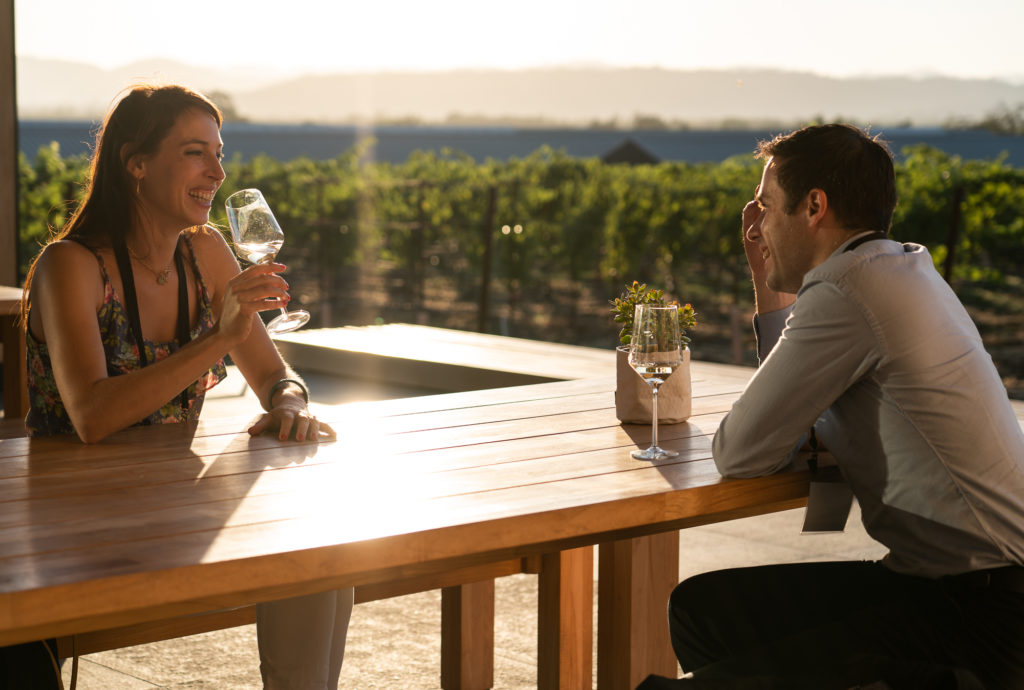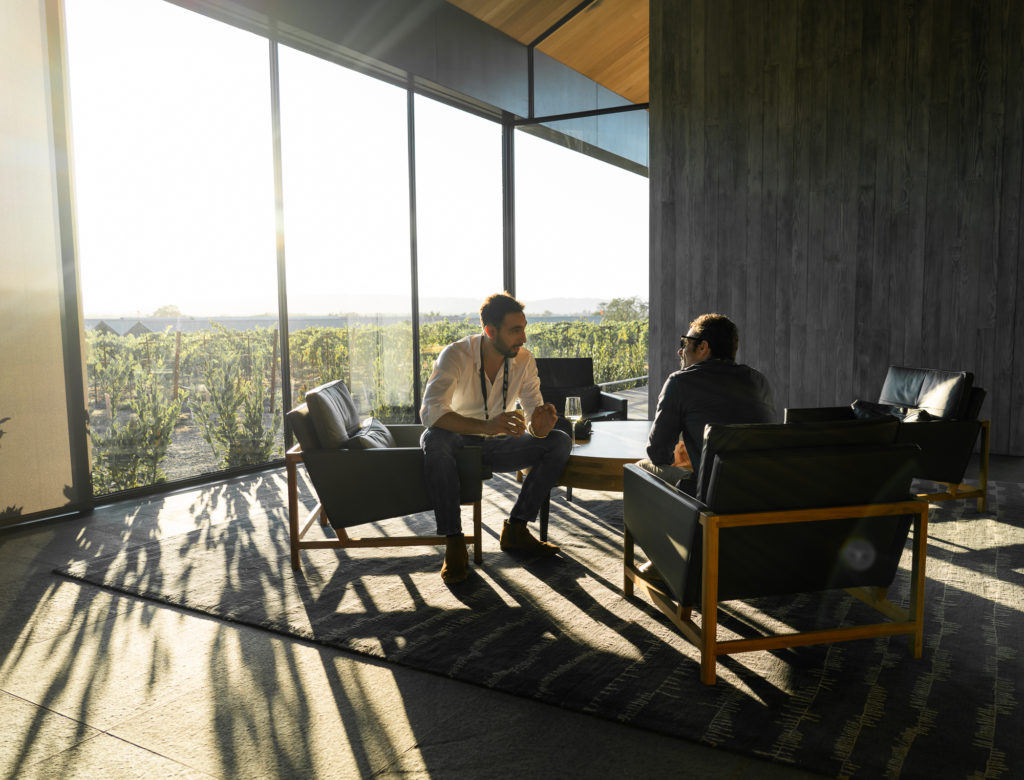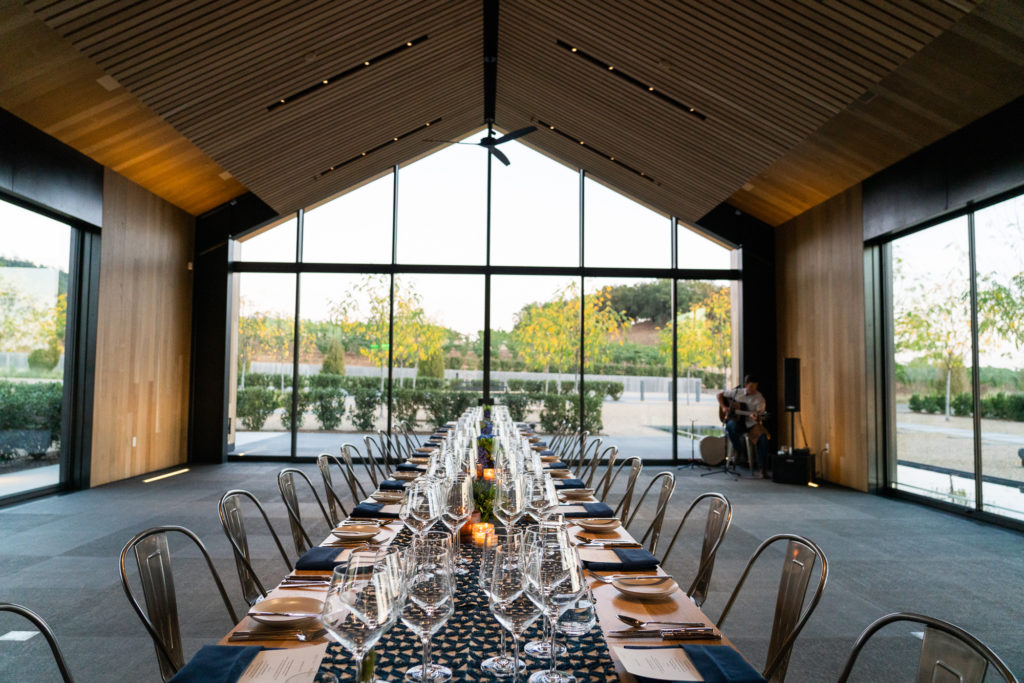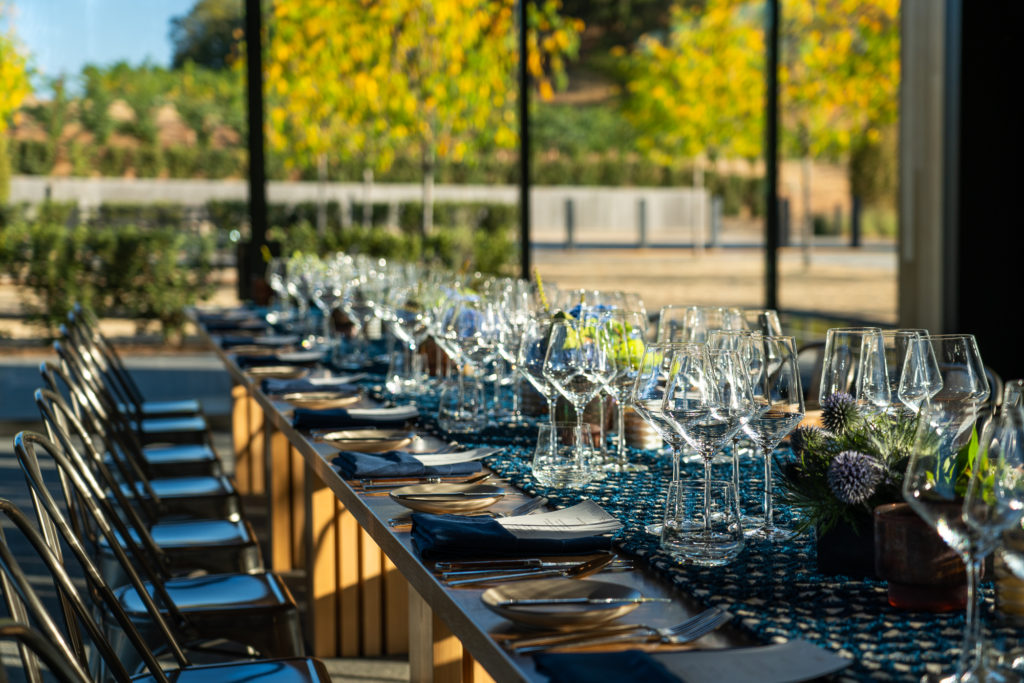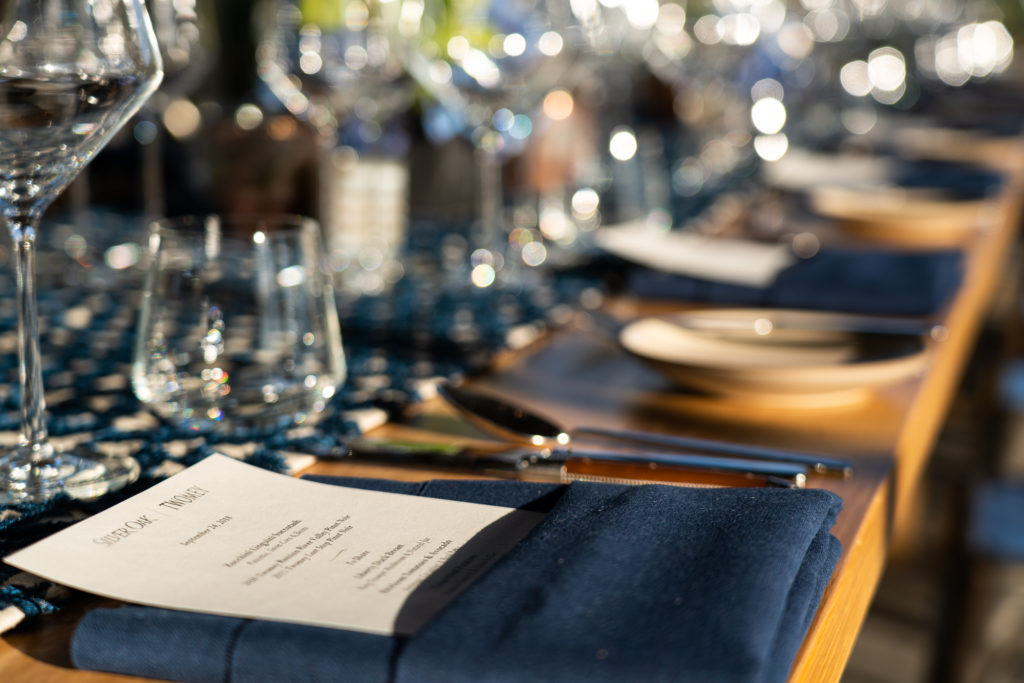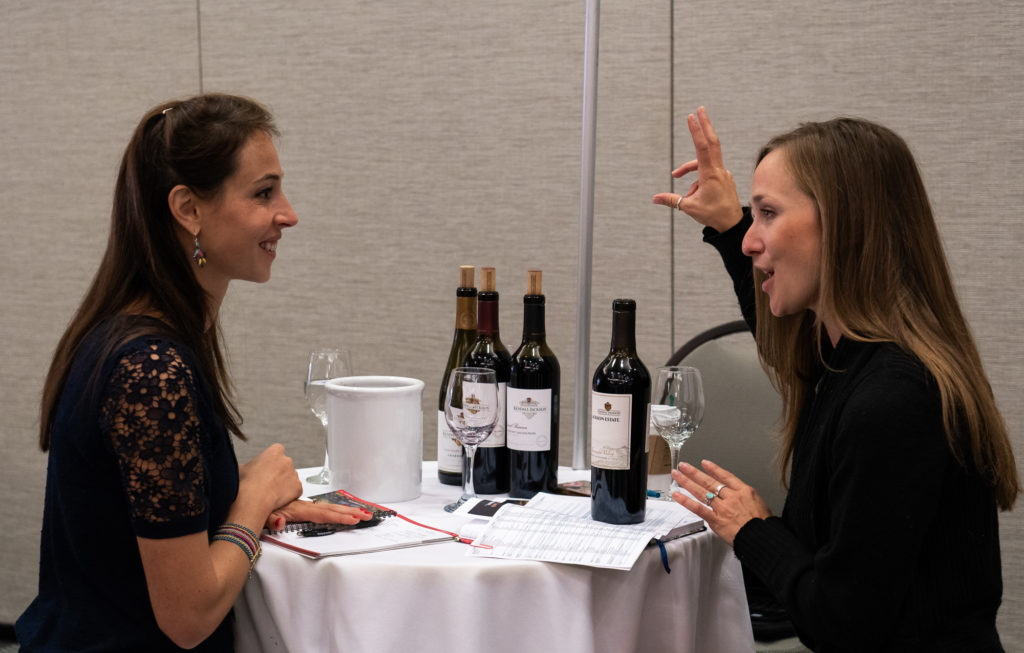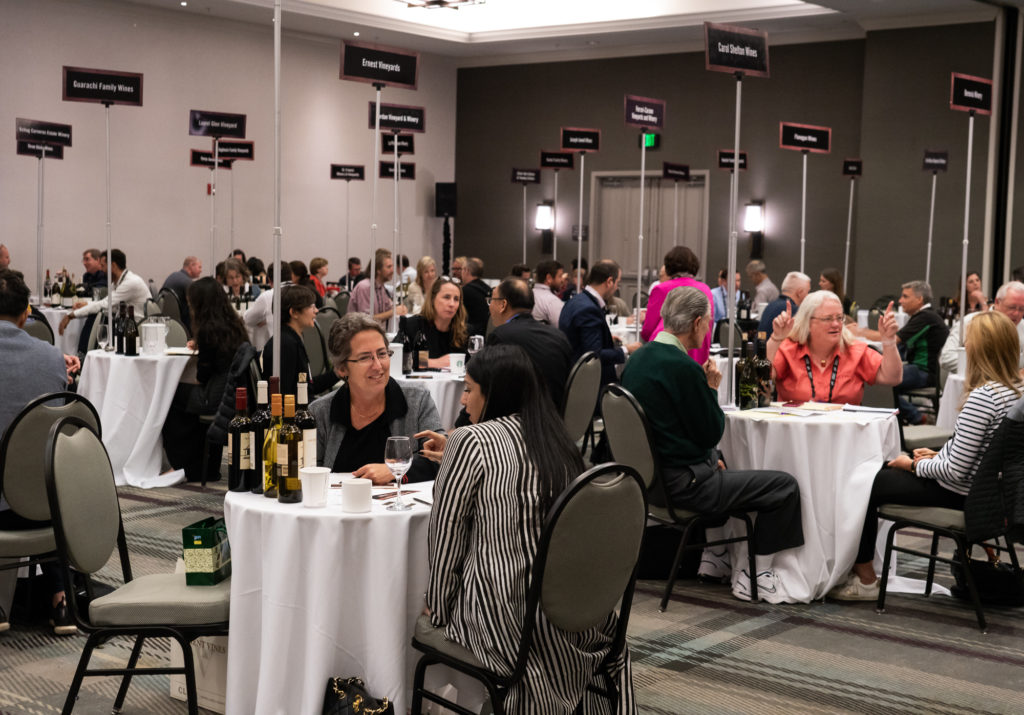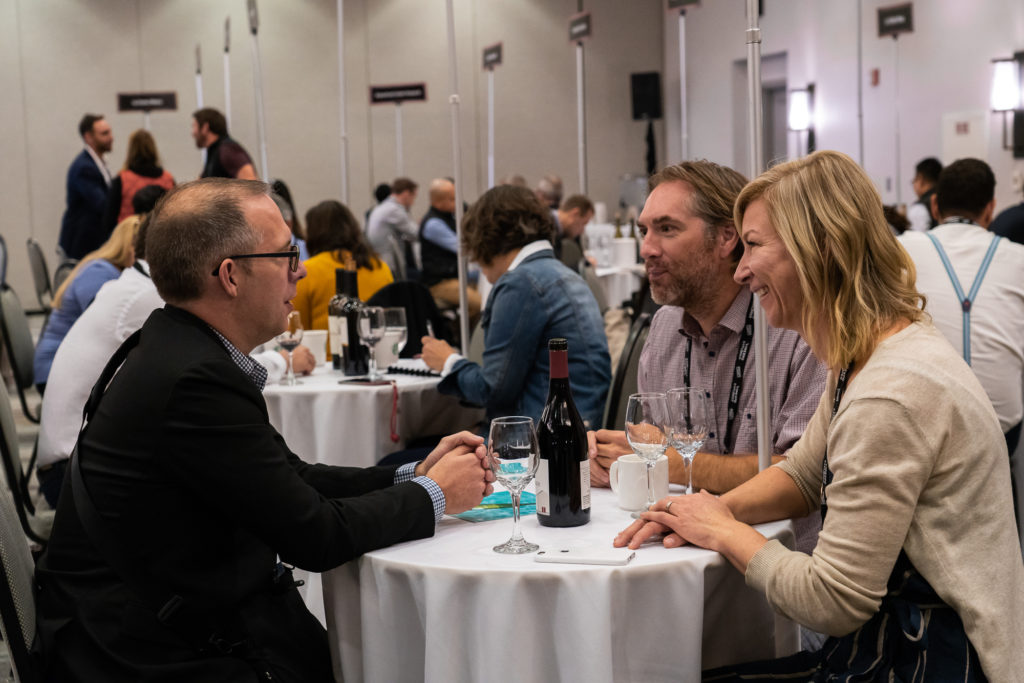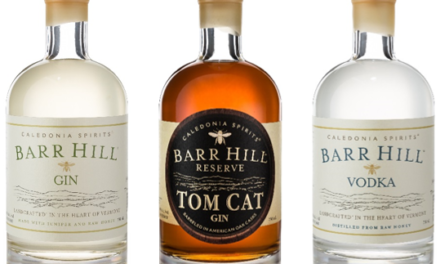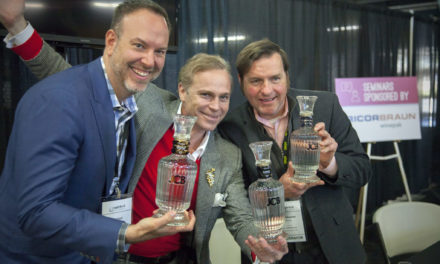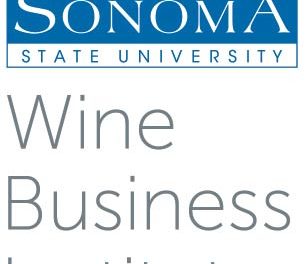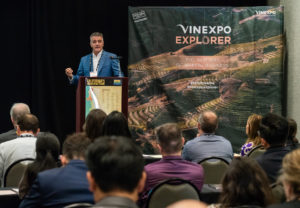
2018 Vinexpo Explorer [Photo by Scott Hampton, courtesy Sonoma County Vintners]
Jackson Family Wines CEO Rick Tigner, who sits on the Vinexpo supervisory board, led the effort to bring the group to California, and the two-day showcase, produced by the Sonoma County Vintners, took place September 23 through 25. Events included a welcome reception at Buena Vista Winery, an industry update and global tasting presented by the Wine Institute, masterclasses at the Wine Spectator Learning Center at Sonoma State University, and myriad winery visits and dinners. Buyers also met one-on-one with wineries during fast-paced, “speed tasting” sessions.
Fresh insights

2018 Vinexpo Explorer global tasting presented by The Wine Institute [Photo by Scott Hampton, courtesy Sonoma County Vintners]
What surprised Andrew Keaveney, wine buyer for Pembroke Wines (an importer, distributor, and retailer in Dublin, Ireland), was his discovery that, “It’s not just chardonnay!” Keaveney, who was on the hunt for ultra-premium cabernet sauvignon and pinot noir, already sells Schug Carneros Estate wines; he met with that winery along with Ramey Wine Cellars, MacMurray Ranch and Frey Vineyards during the speed tasting sessions. With California wines making up 10 to 15 percent of Pembroke’s portfolio, Keaveney’s clientele can be price sensitive, he says, but sales of mid-range imports are performing well. He sees growing interest in Sonoma County when compared to even five years ago.
Heiko Schimeczek is director of fine wine at Carl Tesdorpf, a Hamburg, Germany-based retailer with a second shop in Lubeck. Currently, his company’s website lists only five selections from California, but it caters to an active online wine club of 2,000 members. “We’ve sold Ridge Vineyards and Littorai Wines for 15 years and are specifically looking for Sonoma County crus,” says Schimeczek, who was particularly keen on Vérité, the cabernet franc-dominant Bordeaux blend from winemaker Pierre Seillan, which has achieved cult status.
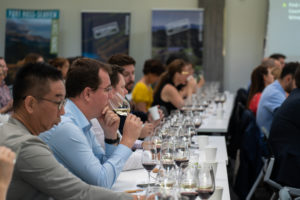
2018 Vinexpo Explorer masterclass at The Wine Spectator Learning Center at Sonoma State University [Photo by Scott Hampton, courtesy Sonoma County Vintners]
Schimeczek pointed to moderate price points as the most challenging for the retailer, as it’s difficult for California to compete with France and Italy at €35 for Bordeaux-style blends. As such, he focuses on sourcing entry-level and luxury wines.
Patrick Andriessen is a wine buyer for Colruyt Group, a “values-driven, family-owned business that’s Germany’s number one wine retailer.” With 5 percent of Germany’s retail wine market, Colruyt owns 550 wine shops and serves both on- and off-premise accounts as well as a robust online wine club. Asked for his general impressions about California wine, Andriessen didn’t mince words: “[Producers] here live in a dream. The domestic market in California is very strong and prices, in general, are high. However, you can invest for quality.” This was his first visit to Sonoma County, and he was favorably impressed with overall wine quality. “The wines were clean and American in style—fruit driven with volume and alcohol—with oak being dominant in many, although less so than 10 years ago.”
According to Andriessen, who’s been with Colruyt for three years, the company has tried several times over the past decade to succeed with California imports; he quickly cites four attempts that dwindled when interest faded due to high cost. And though online wines sales in Germany are growing, he says, the channel is still in its infancy. In Andriessen’s perspective, due to the pressure to compete with online pricing, an online-only model isn’t sustainable. However, the company is placing more emphasis on e-commerce sales, where €30 would be the average price point.
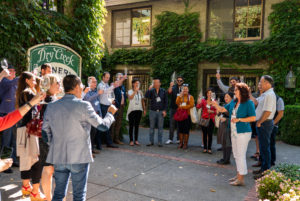
2018 Vinexpo Explorer dinner and tour at Dry Creek Vineyards [Photo by Scott Hampton, courtesy Sonoma County Vintners]
Caribbean buyer Marian De Vertenil represents Vintage Imports in Trinidad and Tobago, a family-owned business founded in 1996 to serve a wholesale market that was both limited and overpriced. The company sells wholesale and retail, with Burgundy wines being 30 to 40 percent of its business. “Trinidad is very price-driven and Tobago not at all,” says De Vertenil. She was impressed with the wines she tasted from Gary Farrell Vineyards & Winery, Alexander Valley Winery, and Seghesio Family Vineyards, calling them “excellent.”
Zinfandel impresses
Sonoma County zinfandel was the variety that took several buyers and Sydney, Australia-based journalist and educator Peter Bourne by surprise. “I began working with California wines as a retailer in the 1980s, and I always thought of zinfandel as a rustic, robust variety,” he says. “The zinfandel wines I’ve tasted during this trip turned my head.”
He was also delighted to find consistency and very high quality across several vintages of pinot noir, saying, “Pinot noir is the variety that’s attracted the Australian market back to California—and to Oregon, as well.” When asked to compare Sonoma County to a region in Australia, Bourne aligned it with the Mornington Peninsula, largely due to maritime influence and varietal diversity.
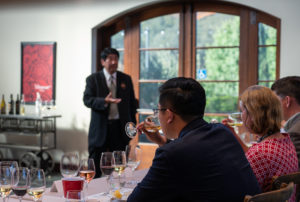
2018 Vinexpo Explorer tasting and tour at Francis Ford Coppola Winery [Photo by Scott Hampton, courtesy Sonoma County Vintners]
“The Russian River Valley AVA has a stronger reputation in the UK fine wine market than Sonoma County as a whole,” says Patrick Schmitt, director of the London-based trade publication The Drinks Business. He also pointed to Seillan’s 2012 Vérité as a wake-up call, describing it as extraordinary. “If asked to name my desert island wine region, I’d have to go with Sonoma County,” he says. Schmitt was clearly smitten with his discoveries and, in particular, noted the wines made by David Ramey.
London-based Sarah Knowles, MW, wine buyer for the Wine Society, a members-only wine club that buys direct and imports, visits the California market every other year. With the Wine Society list focused on Old World regions, Sarah still has a lot of flexibility in making selections for the 25 percent of the list that’s devoted to New World producers.
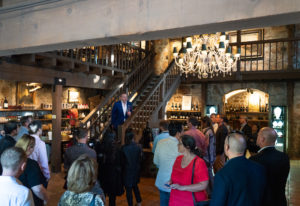
2018 Vinexpo Explorer welcome reception at Buena Vista Winery [Photo by Scott Hampton, courtesy Sonoma County Vintners]
Yang lived in Napa Valley for several years before returning to Taiwan in 2009. During the speed tasting session, he met with Cruse Wine Co., Arista Winery, Marcassin Wine Co., Senses Wines, and Three Sticks Wines, looking for wines that can demonstrate to his skeptical clientele that California wines have the ability to age.
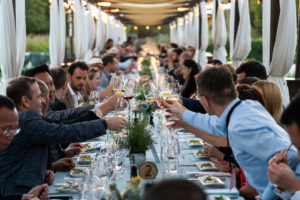
2018 Vinexpo Explorer winery dinner at Jackson Family Winery & Gardens [Photo by Scott Hampton, courtesy Sonoma County Vintners]
As his 2012 Vérité was receiving rave reviews during a final dinner, winemaker Seillan spoke eloquently about his decision to make wine in Alexander Valley. “There’s no limit to the discovery in Sonoma County, a place where we can make the best wine in the world. We’re not competing with or copying Bordeaux, we’re transmitting the message of the terroir.” As a self-professed “servant of the soil,” his remarks struck an emotional chord with the global wine-buying audience, for whom expression of place is clearly a priority.
As the Vinexpo Explorers gathered before their final dinner together of the trip, Beaujolais was announced as the location Vinexpo Explorer 2019, slated for late September.
Press releases are generated outside of Spirited magazine and the information contained does not necessarily reflect the opinion of Spirited or its parent company, Sonoma Media Investments.

